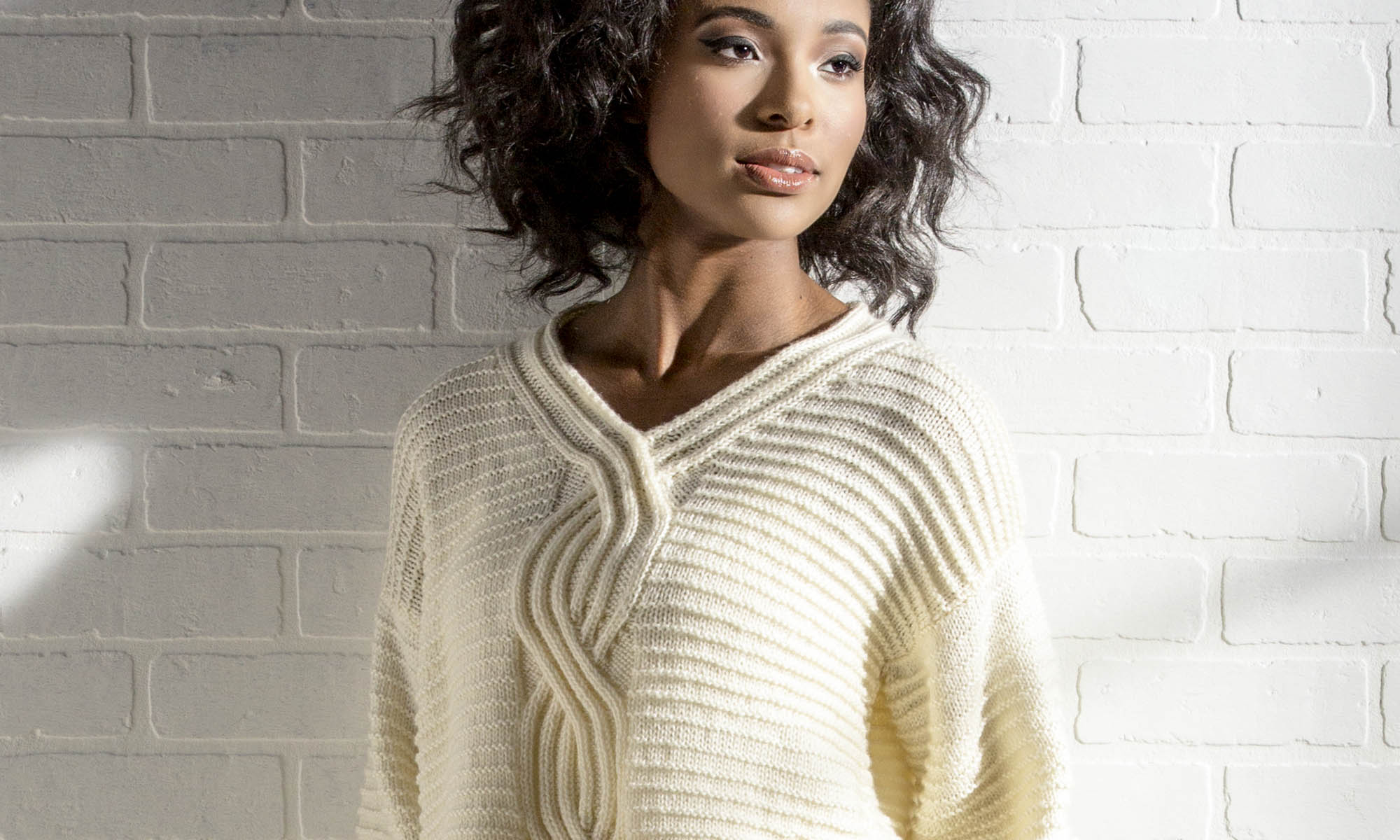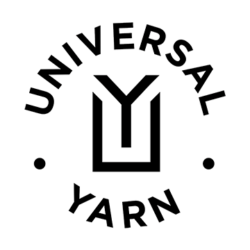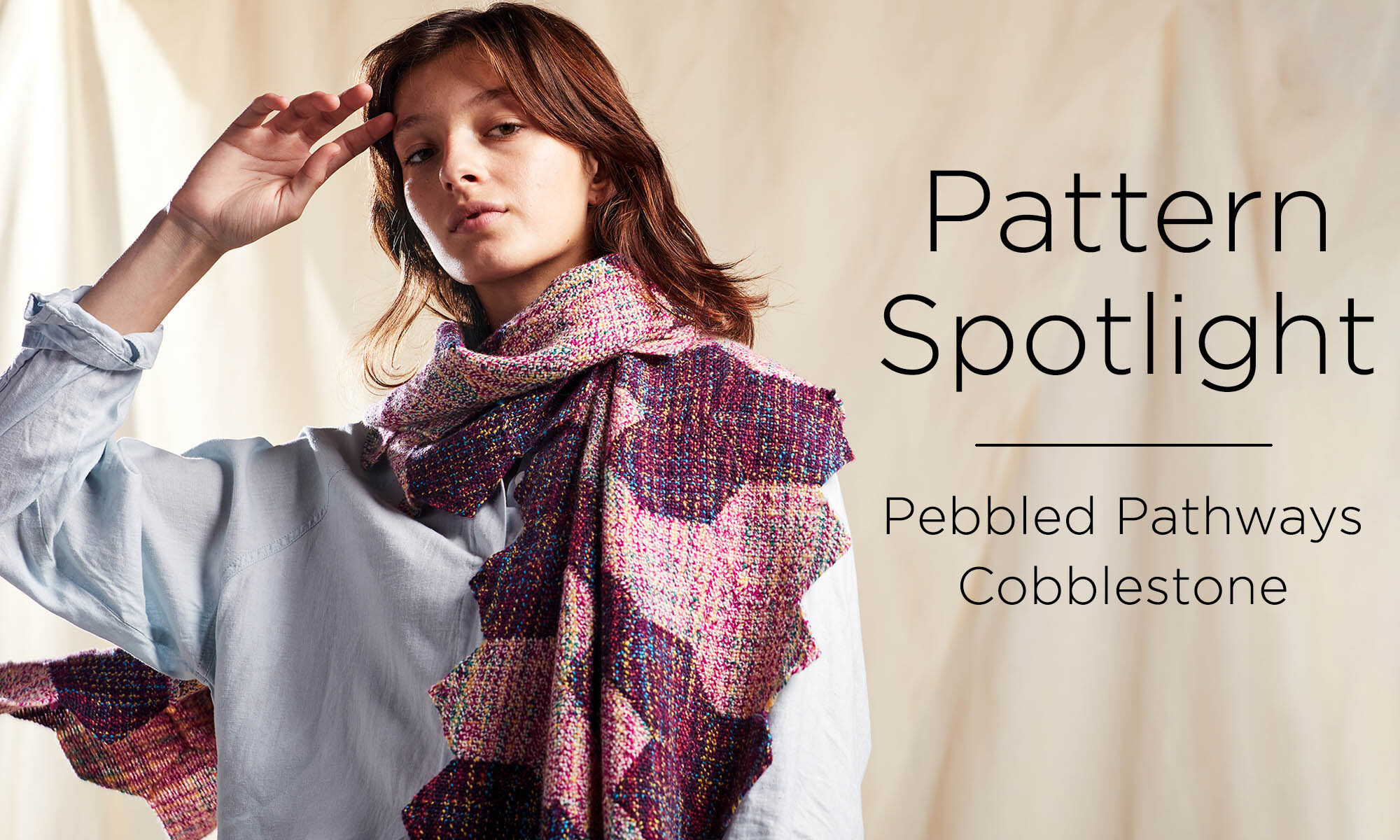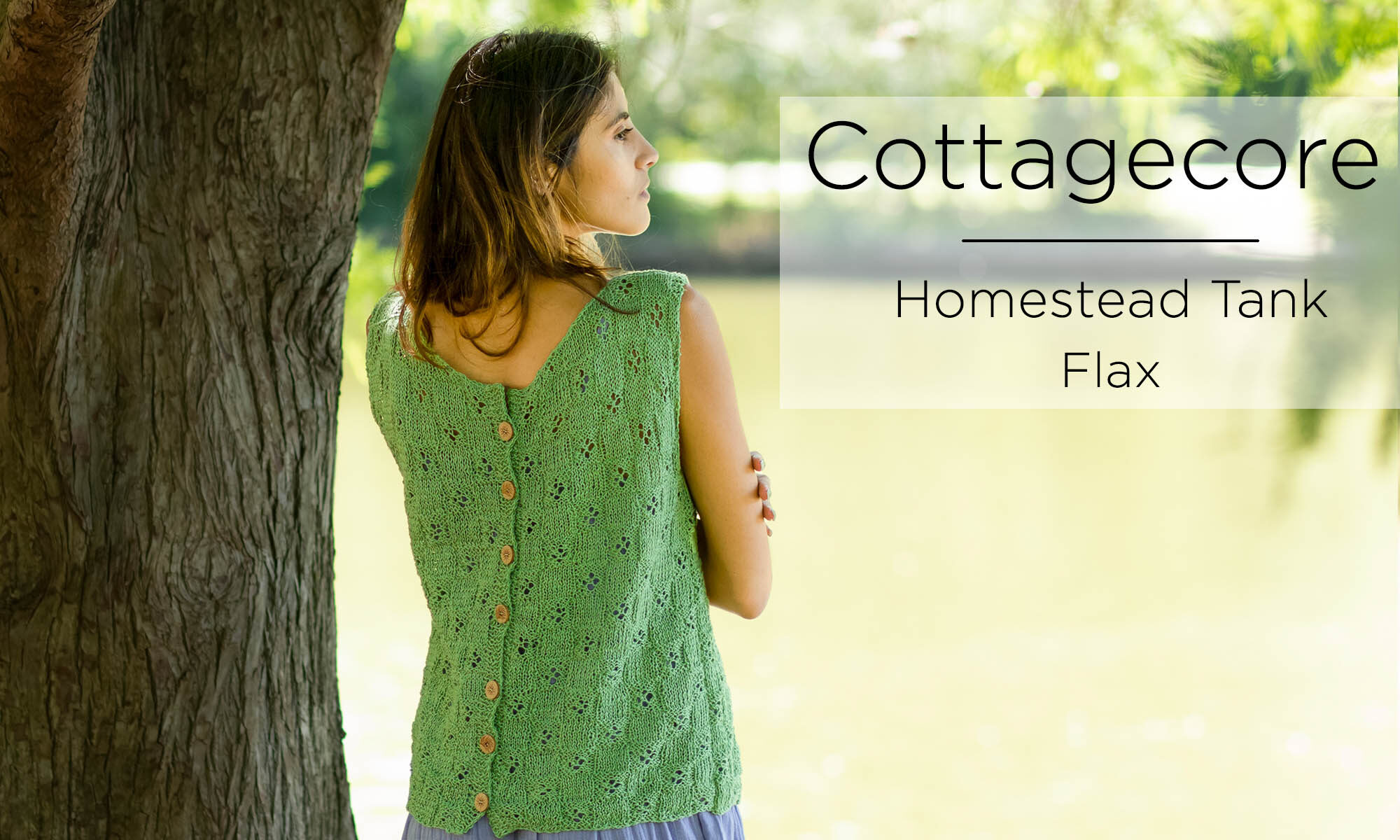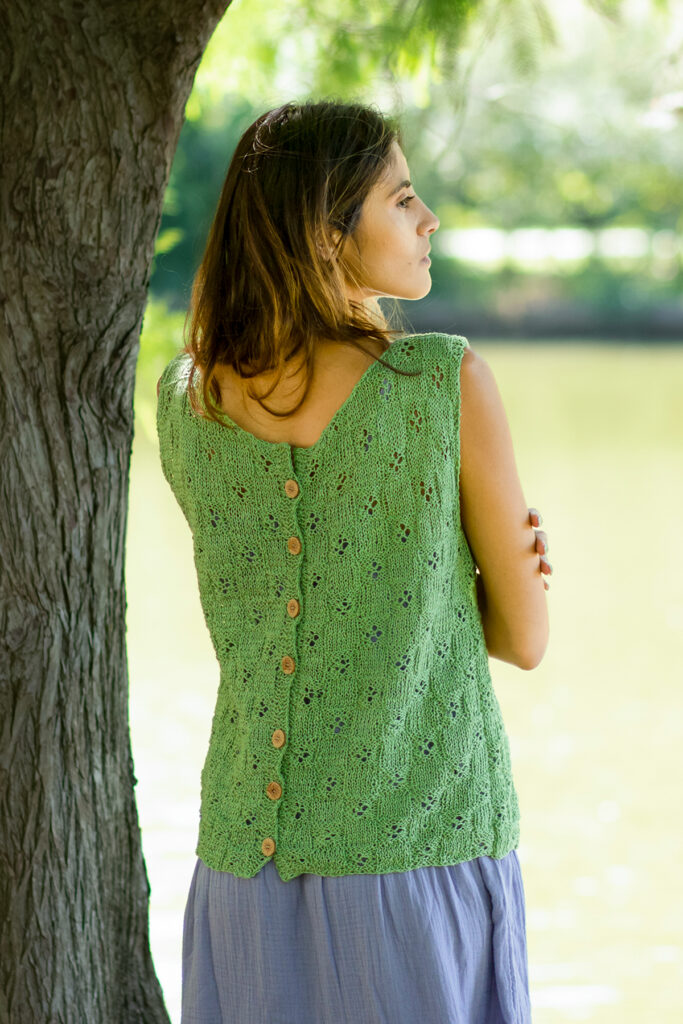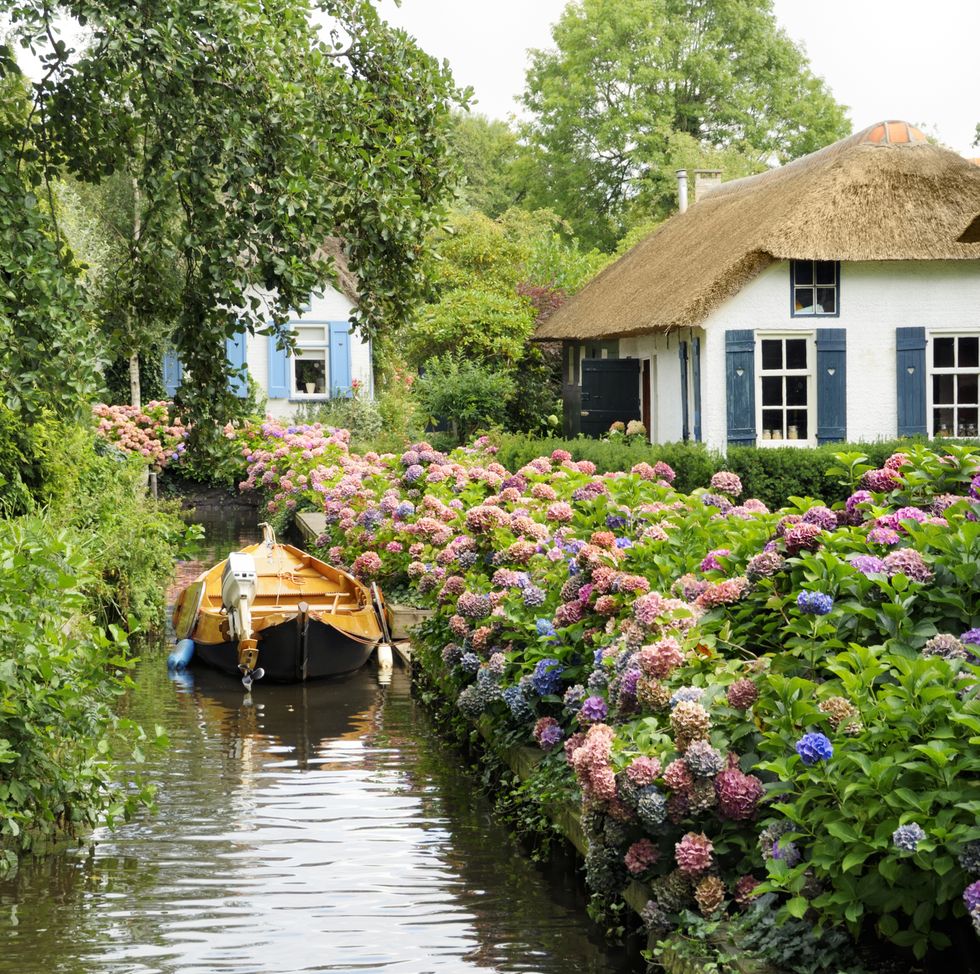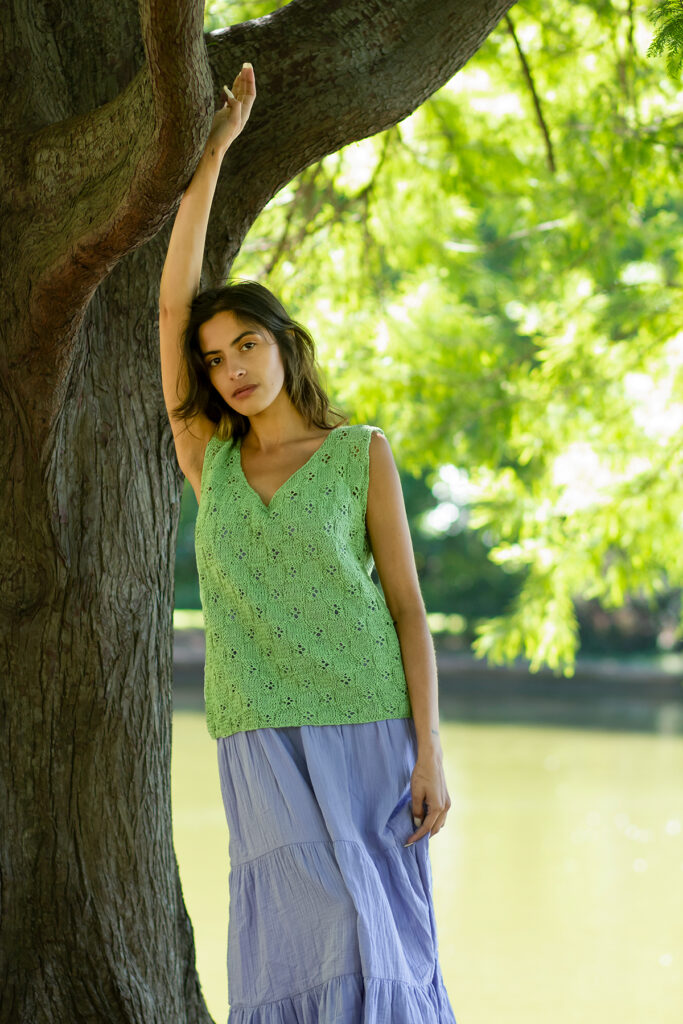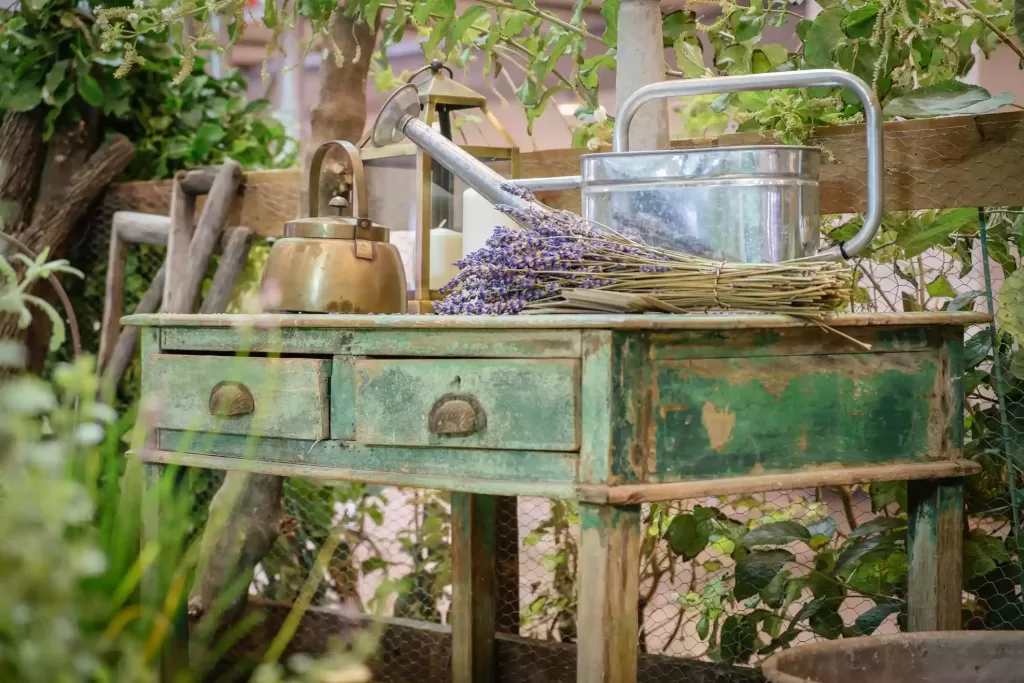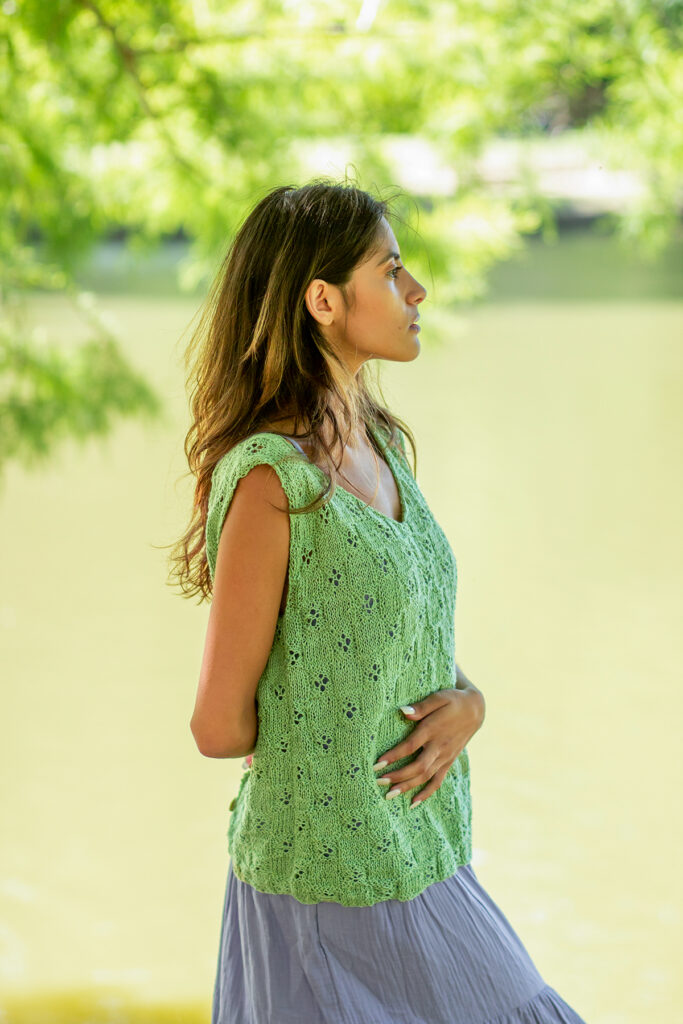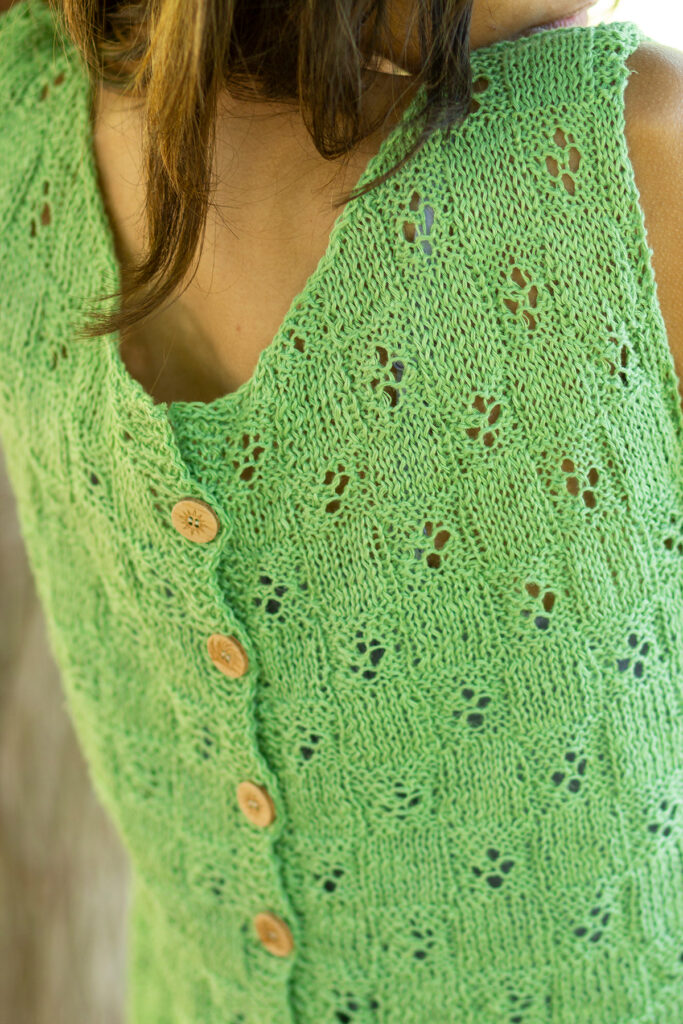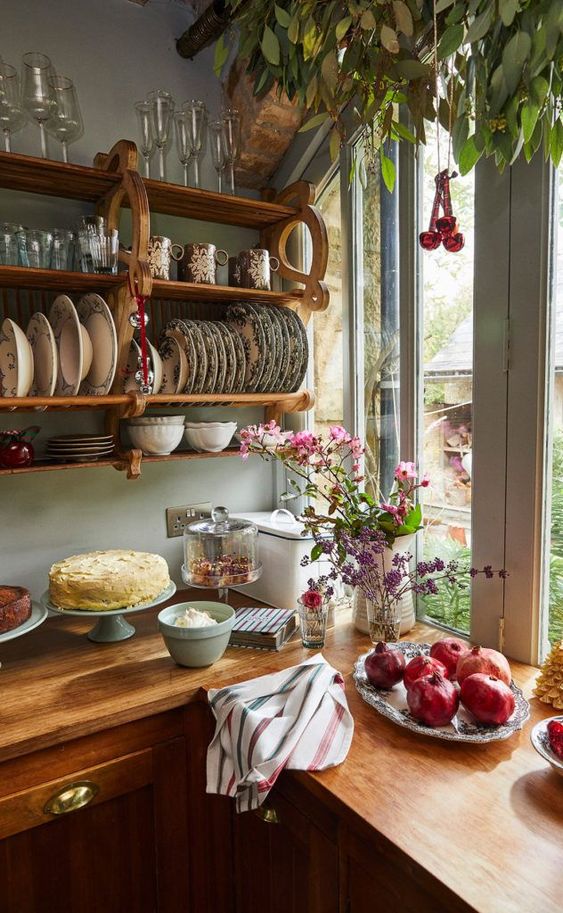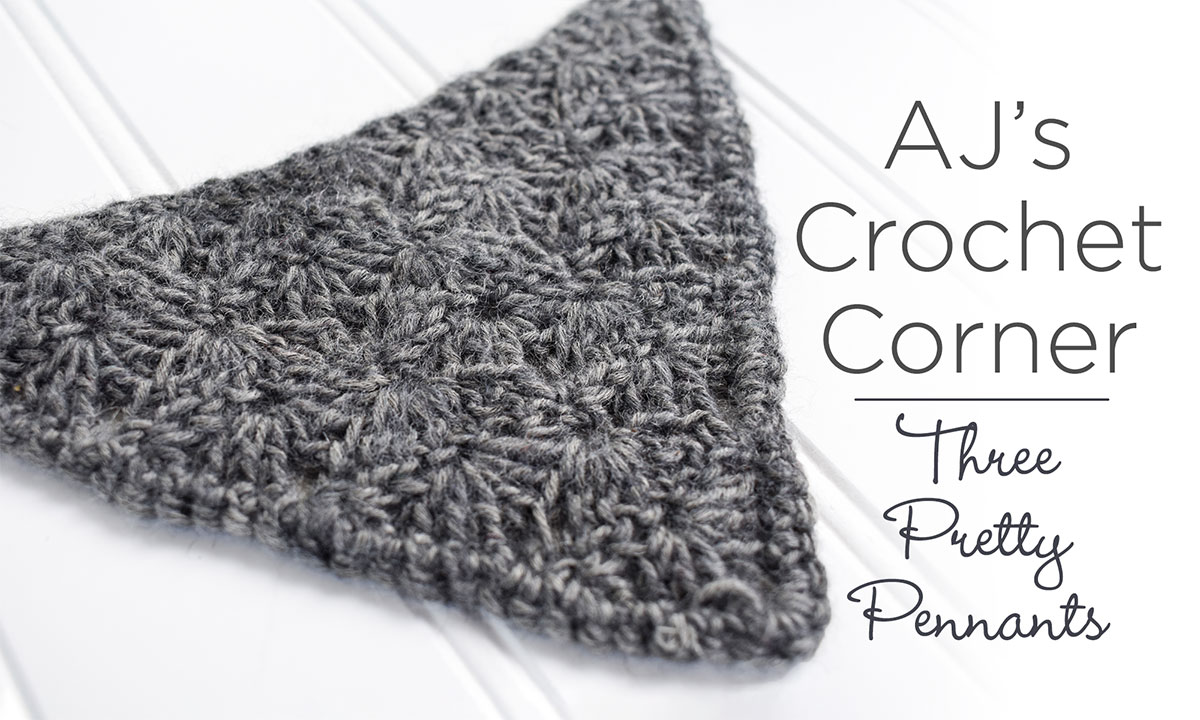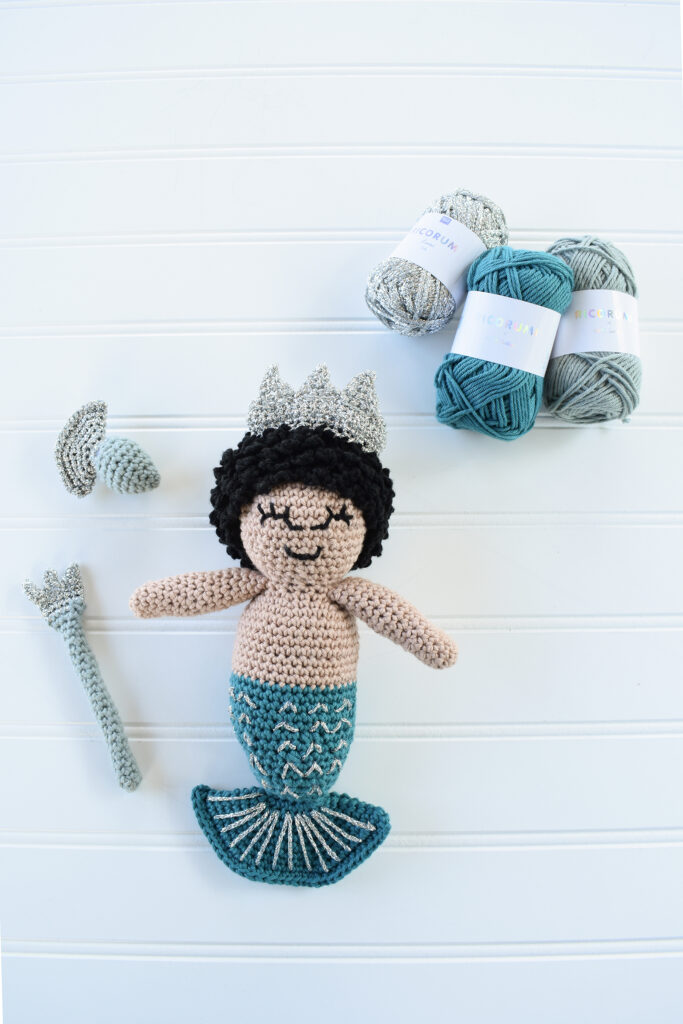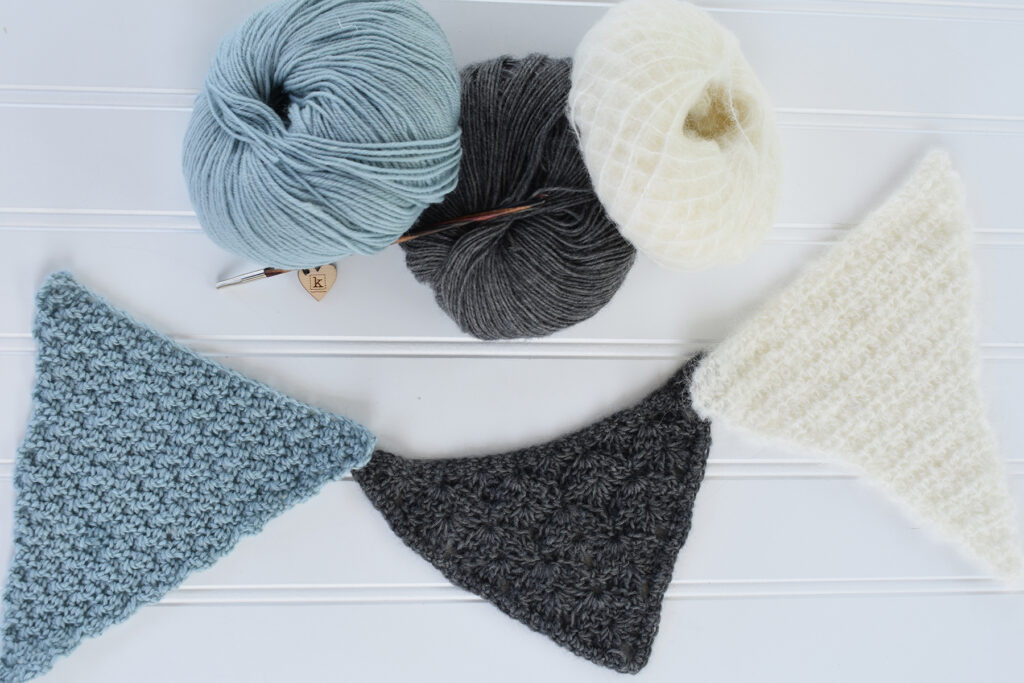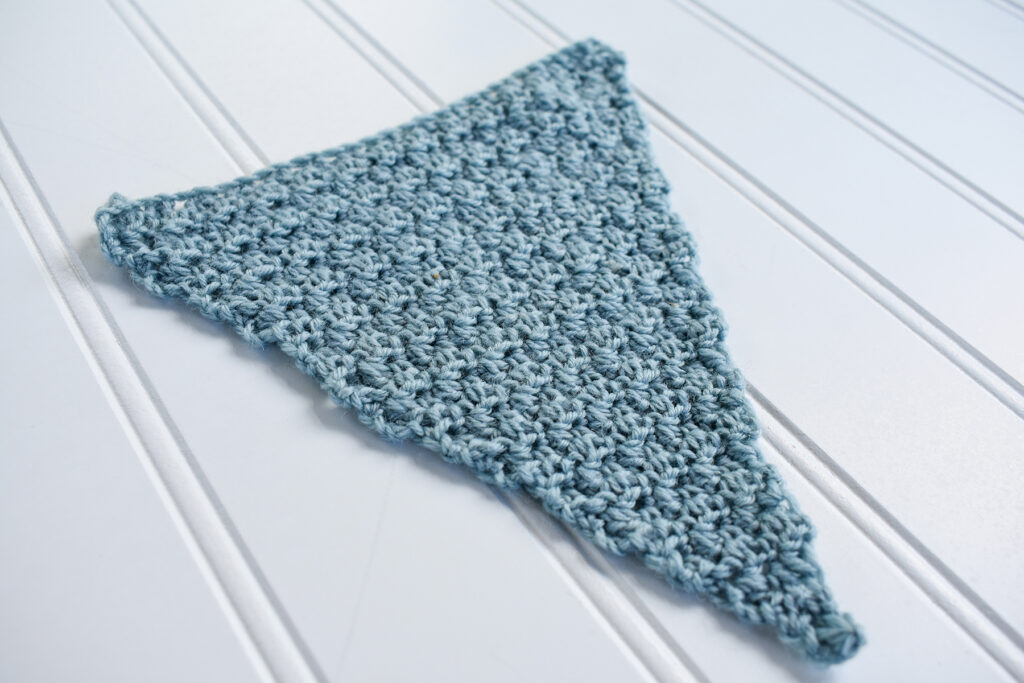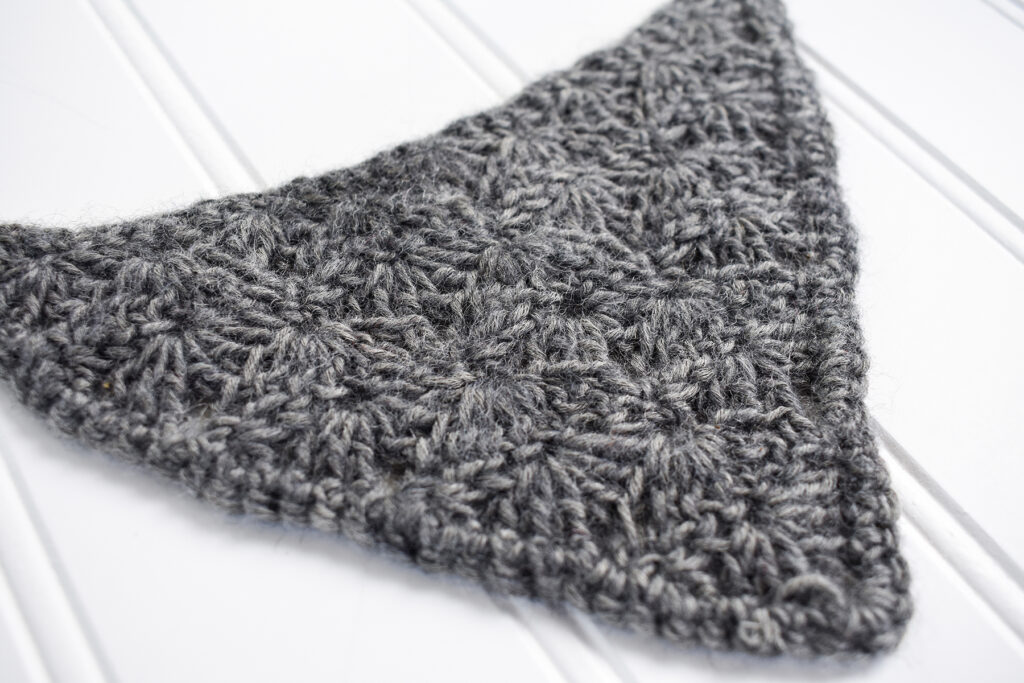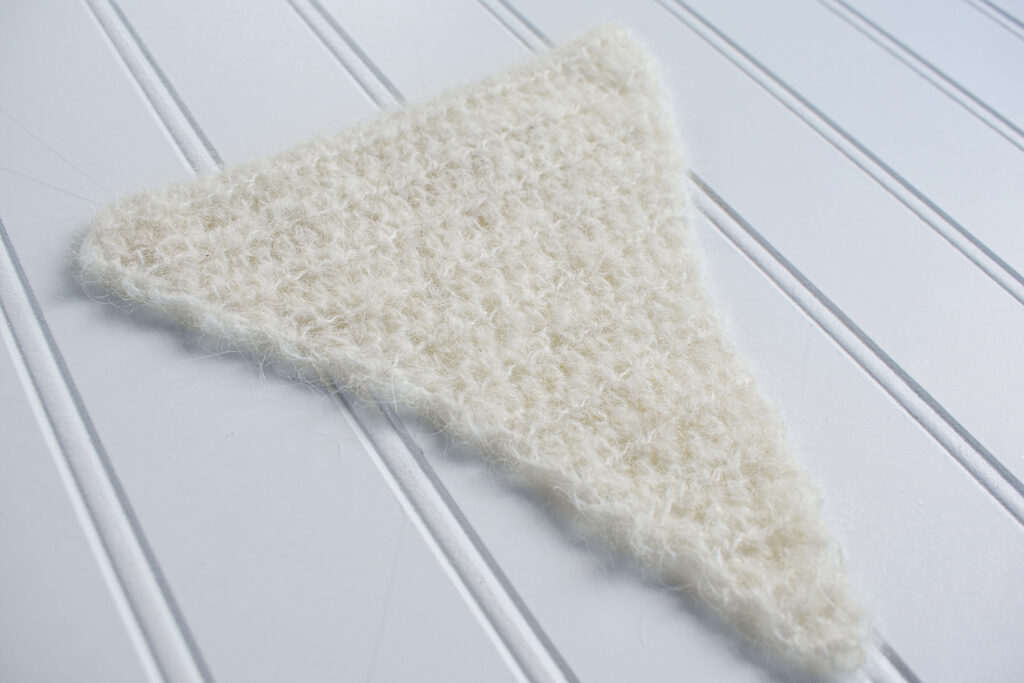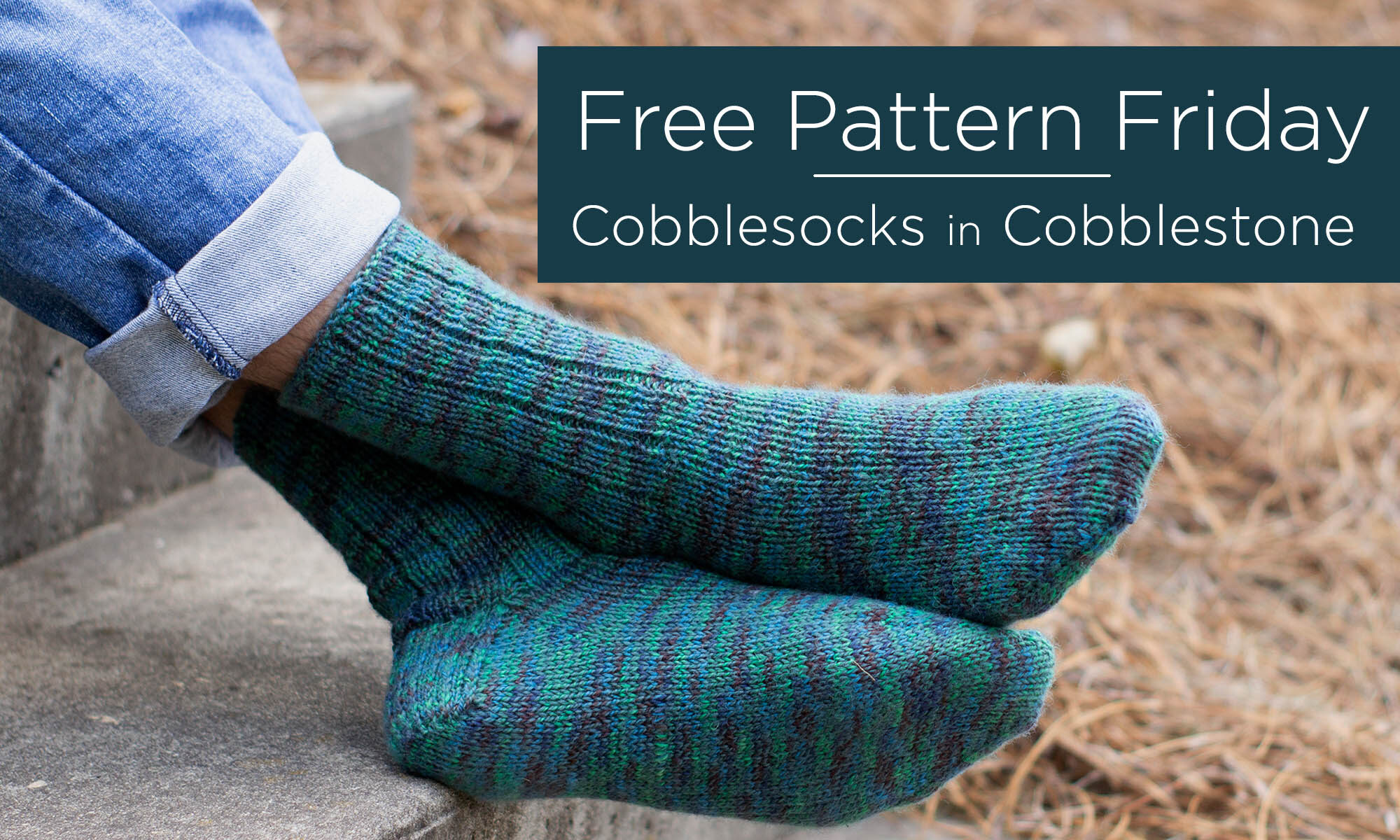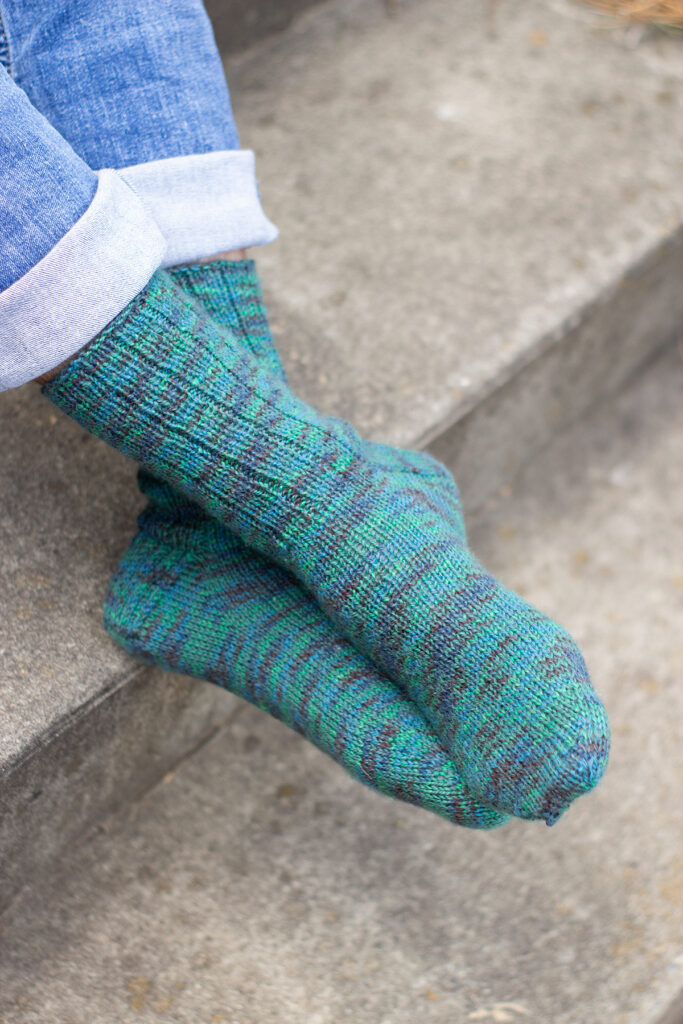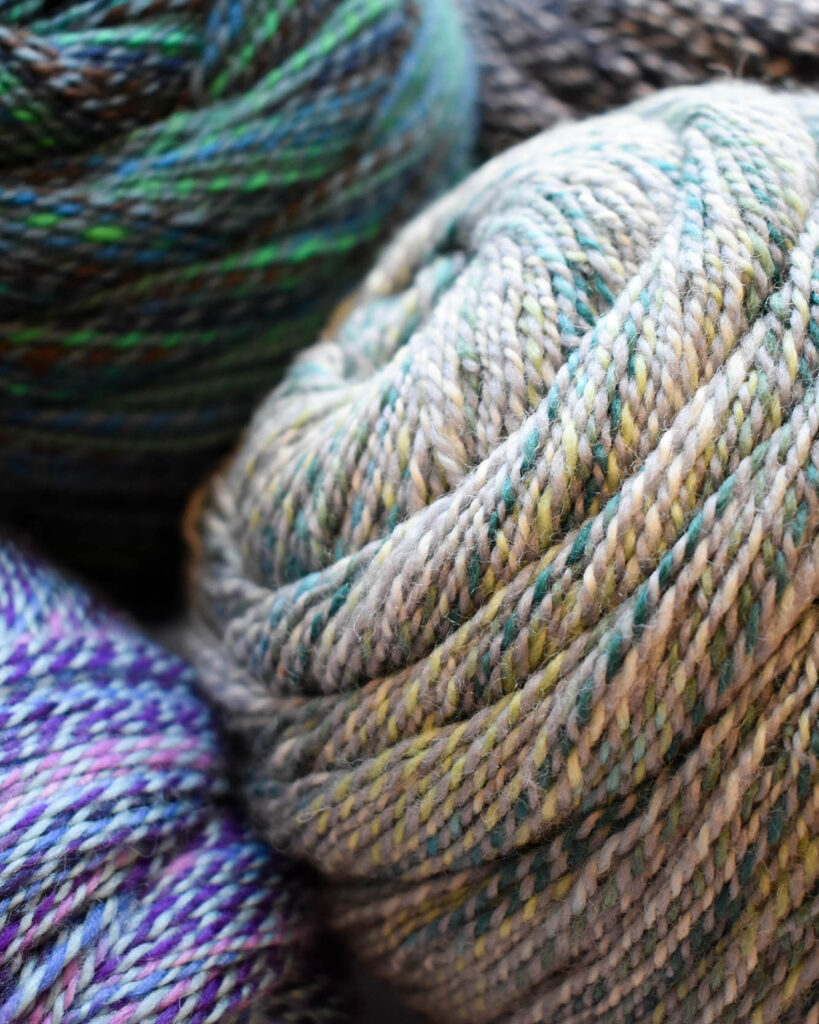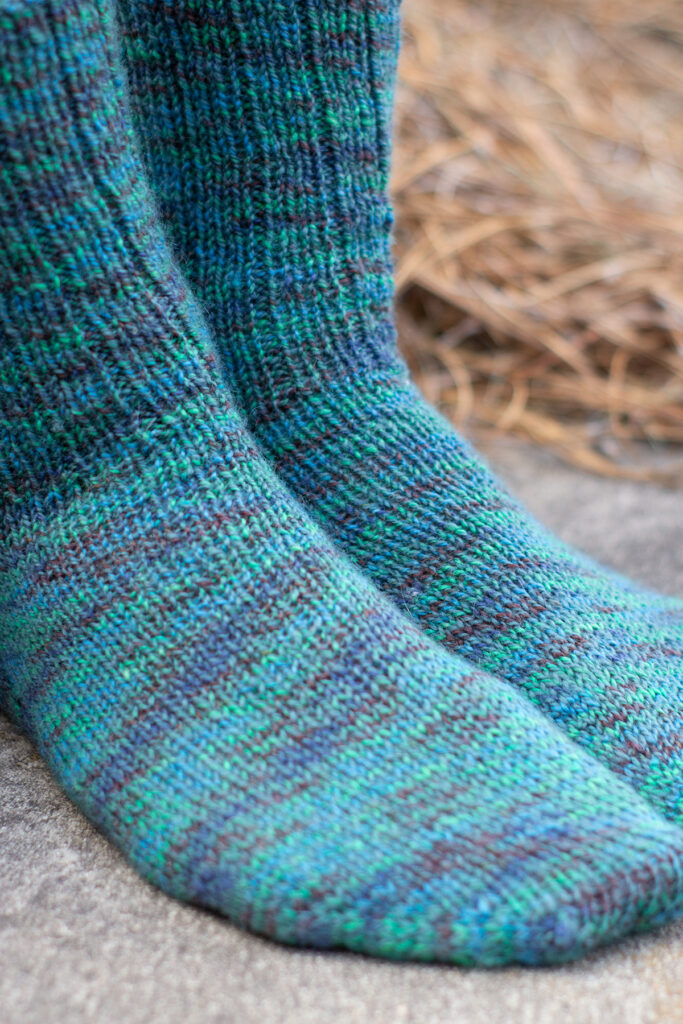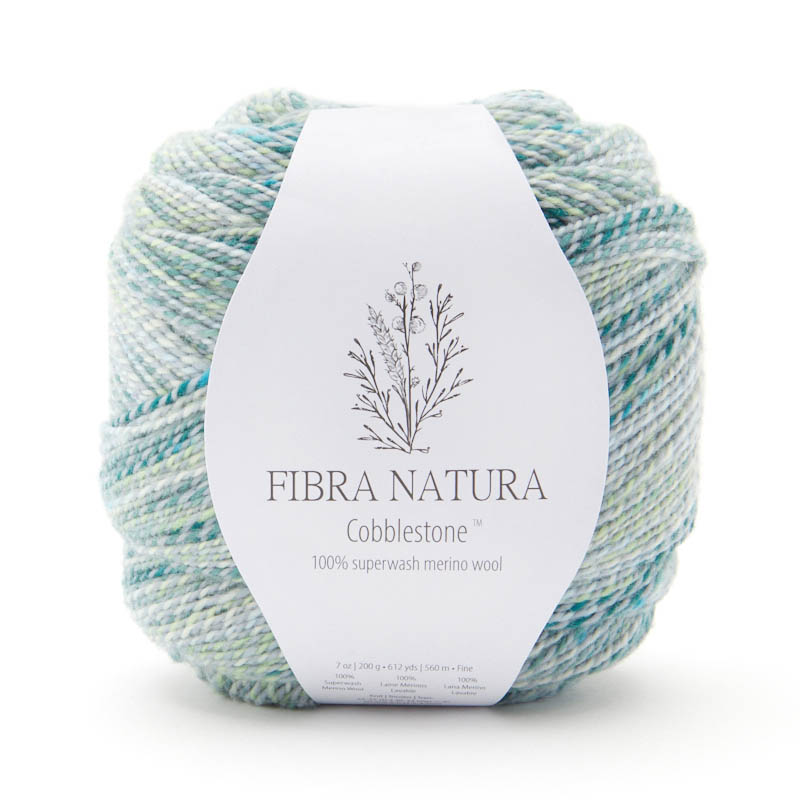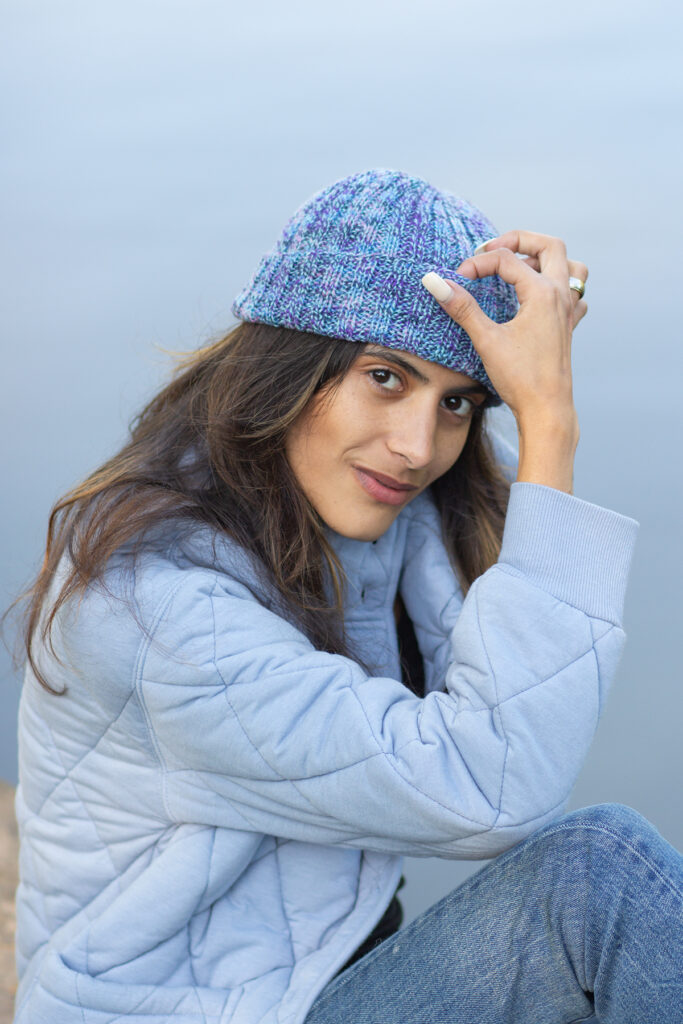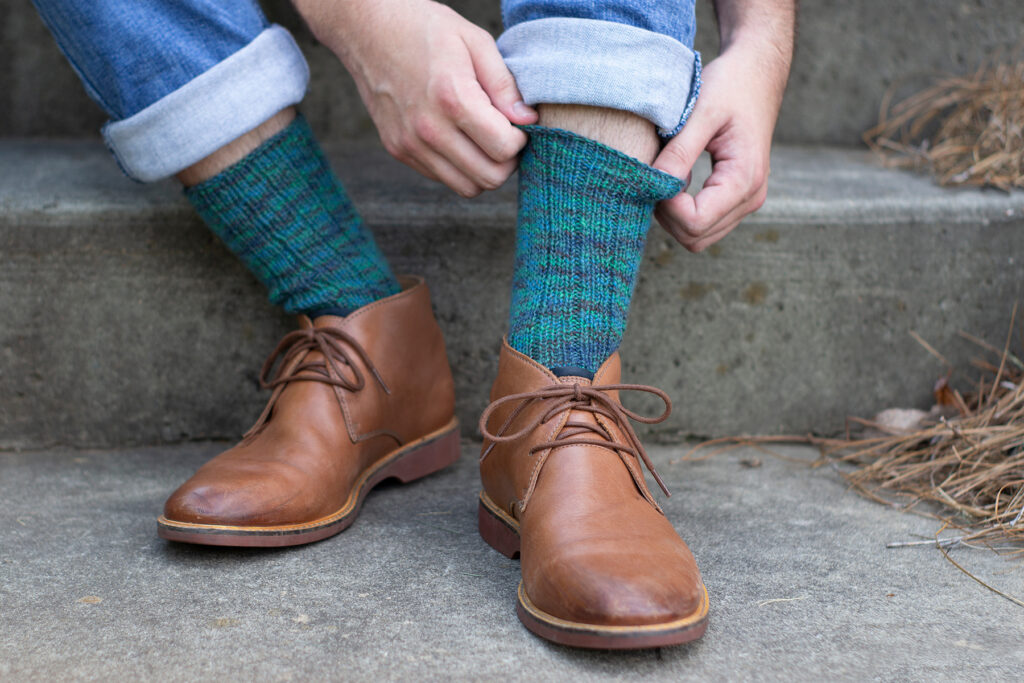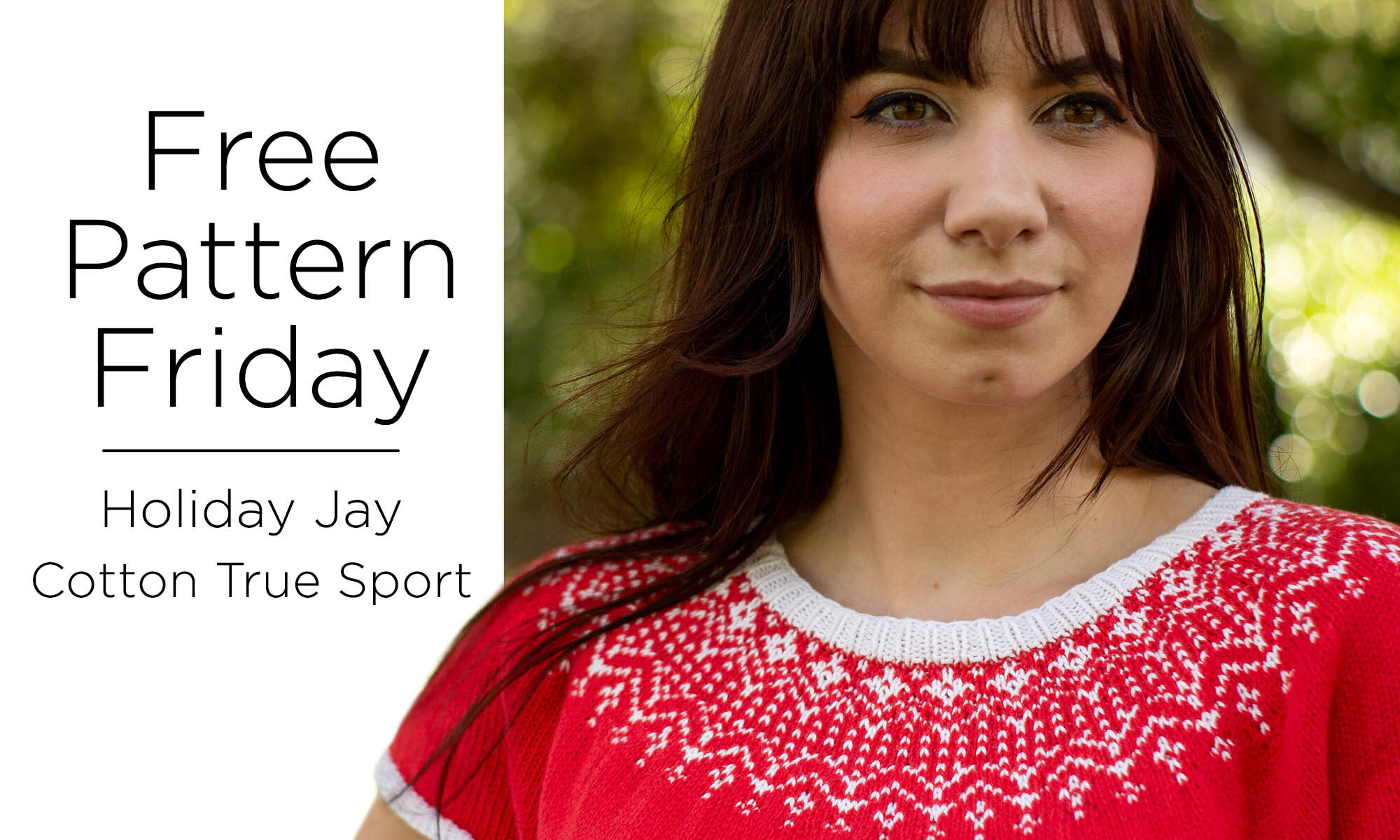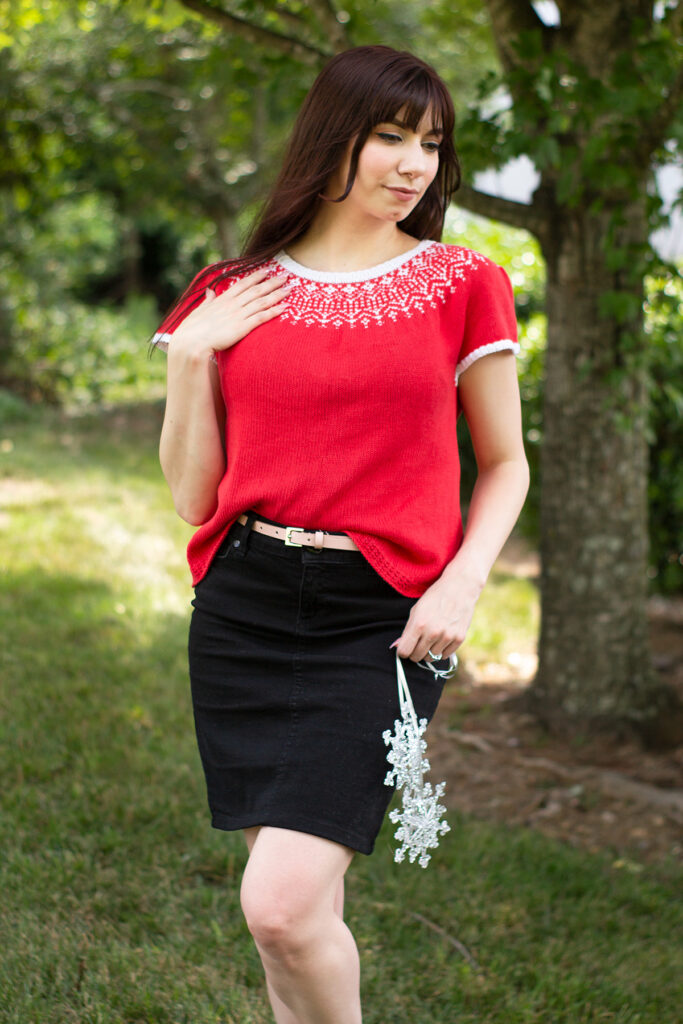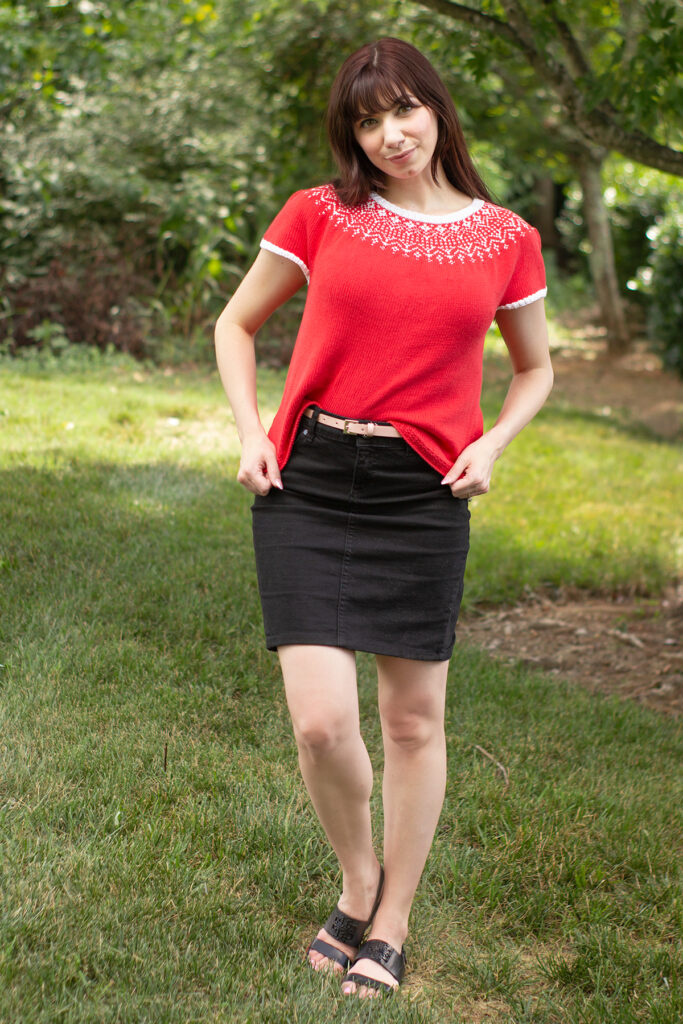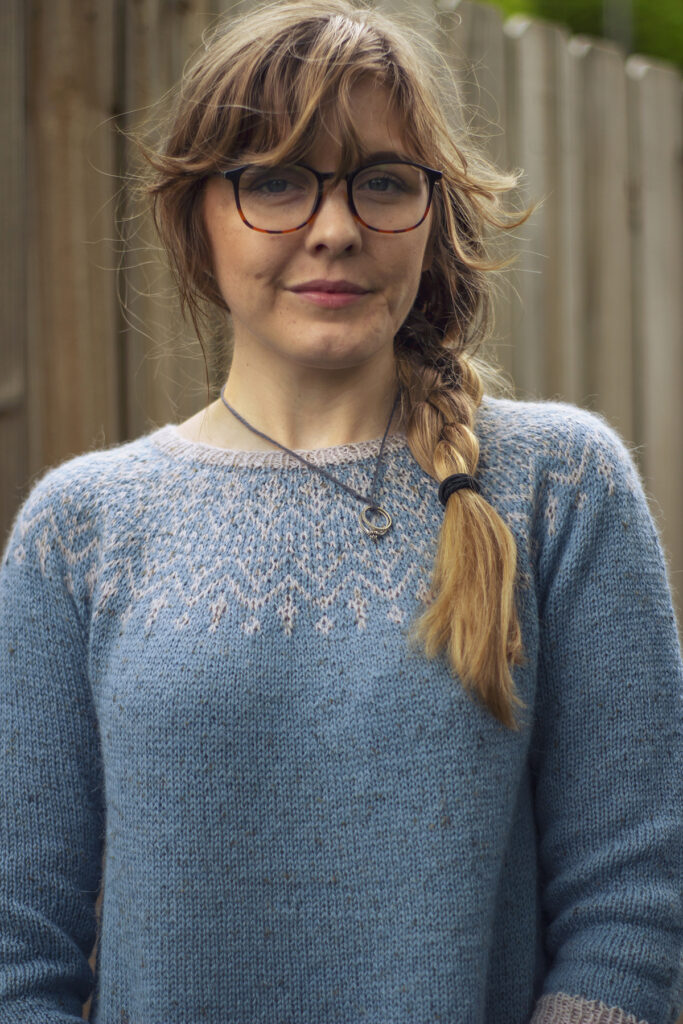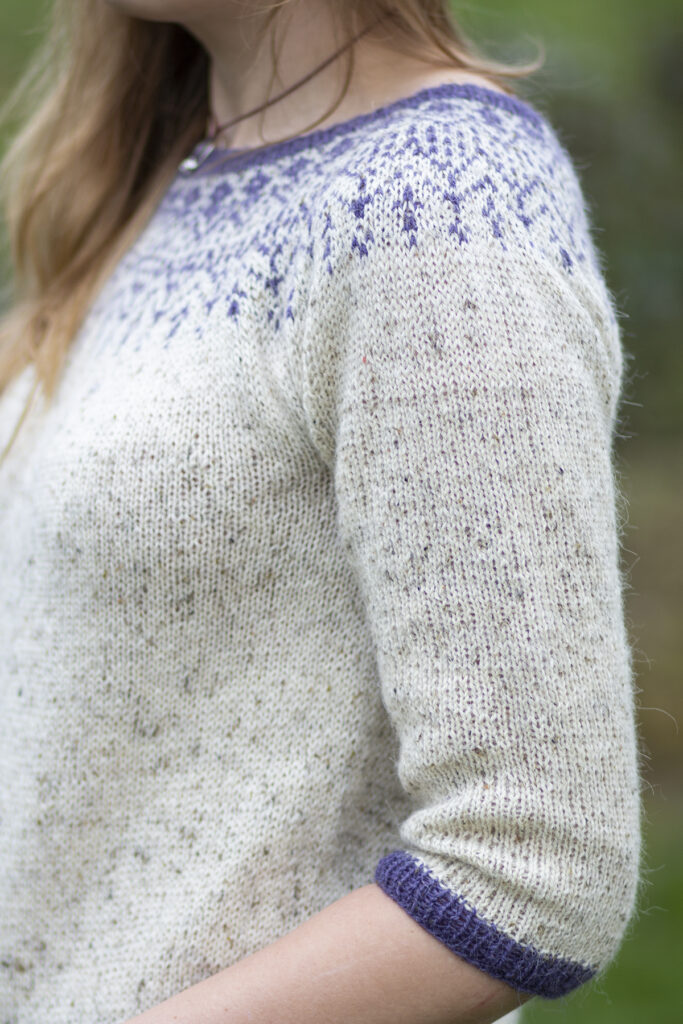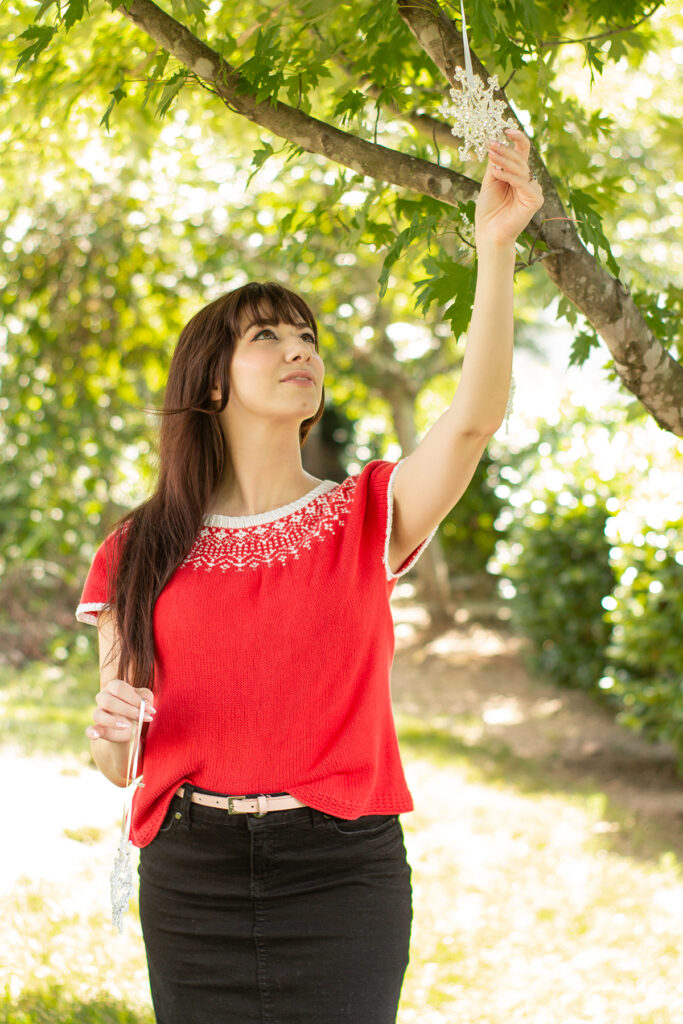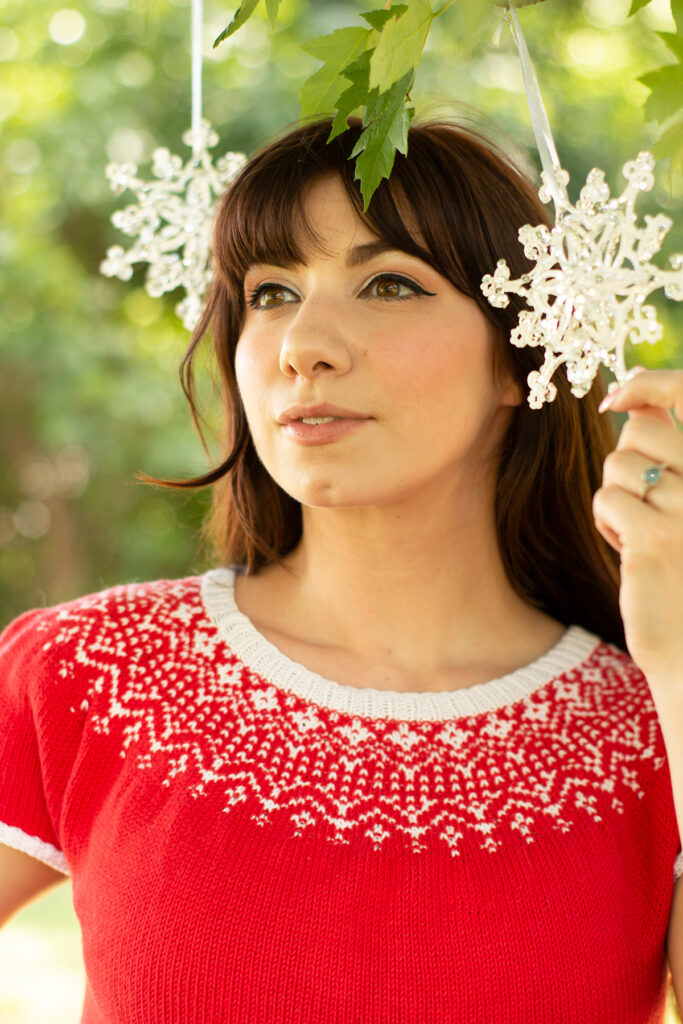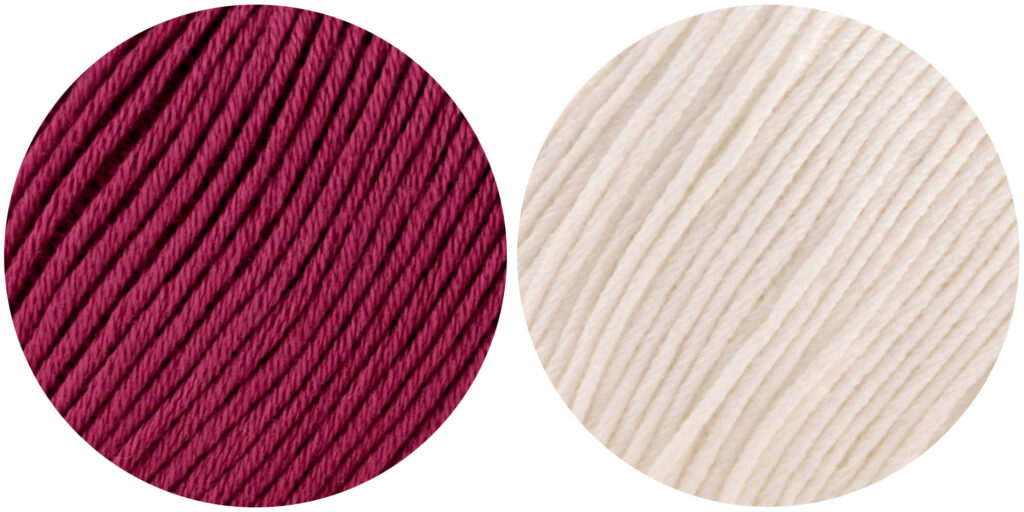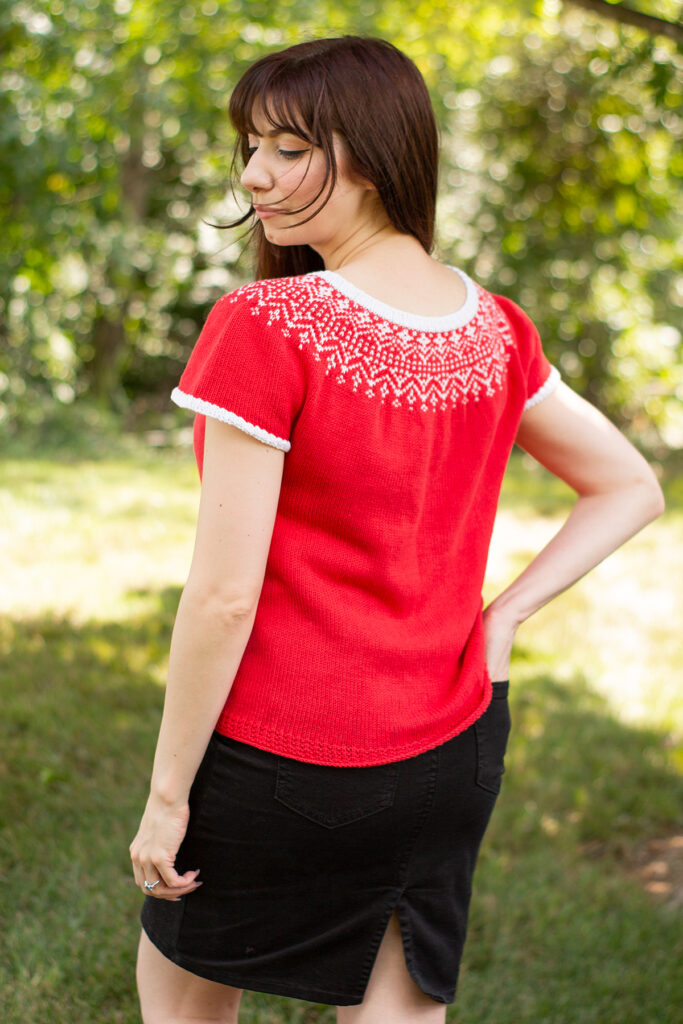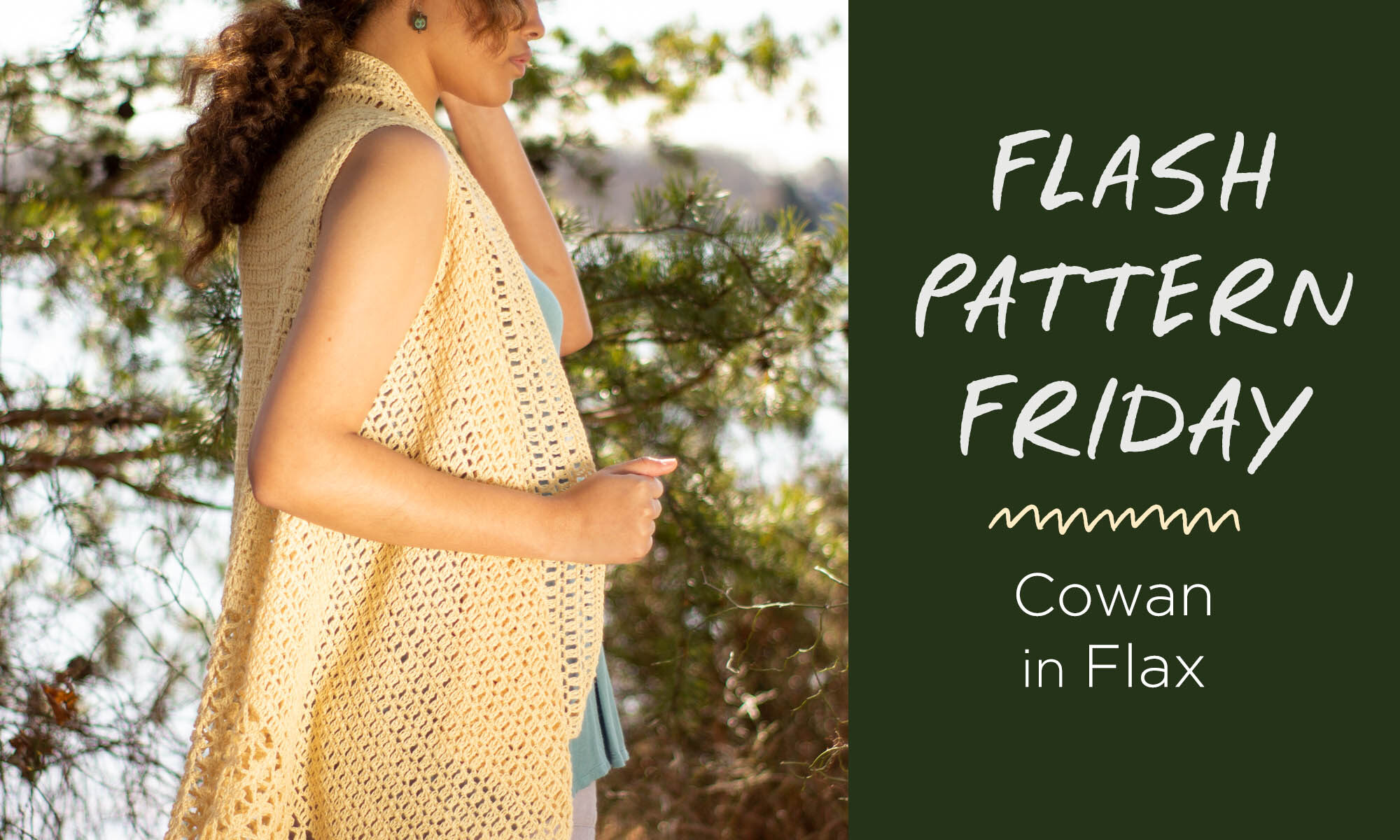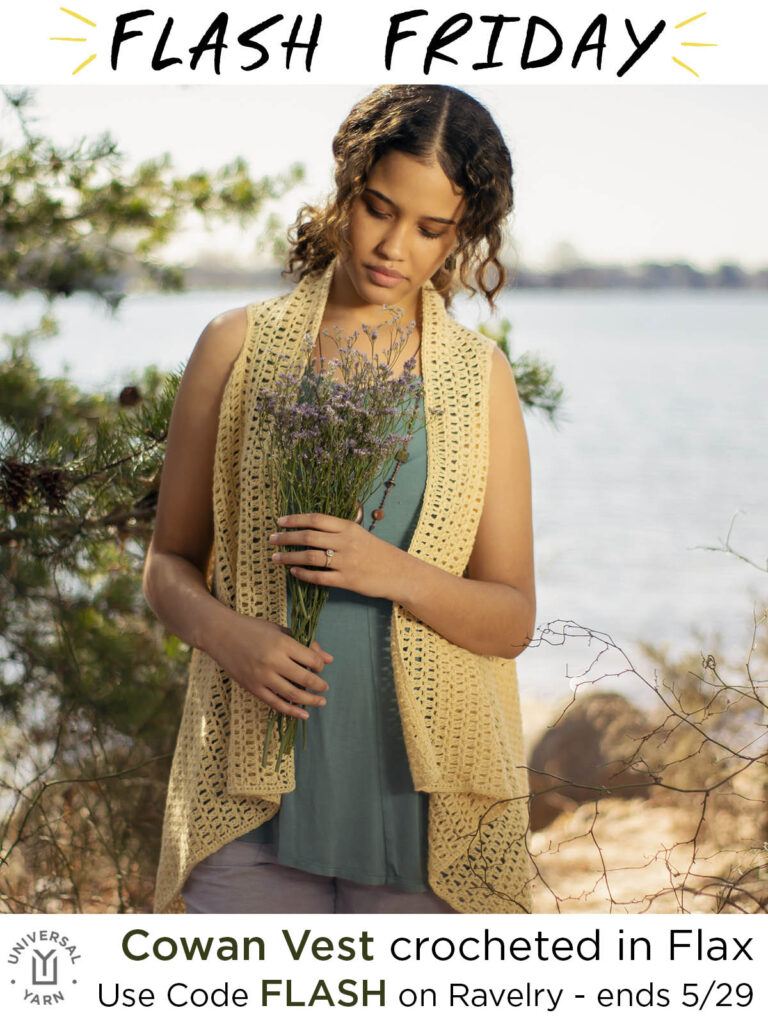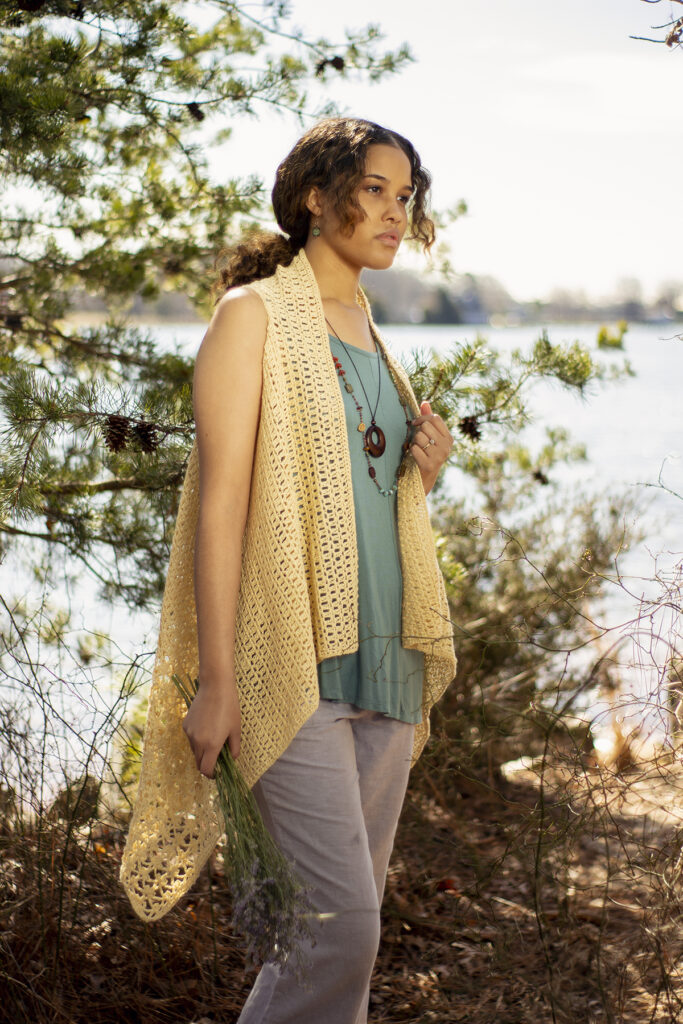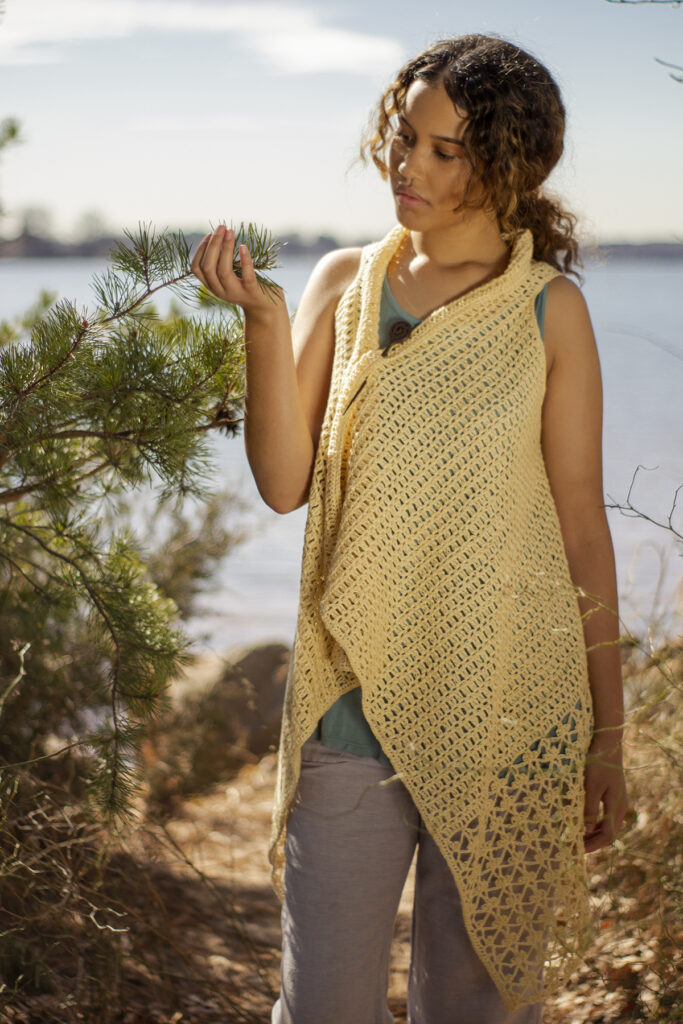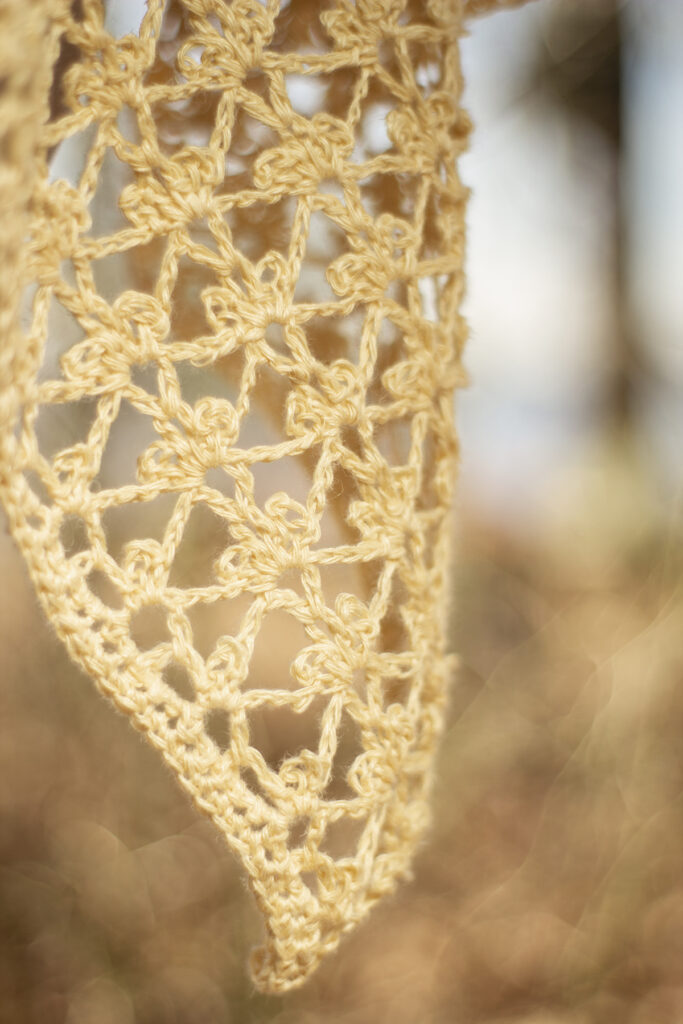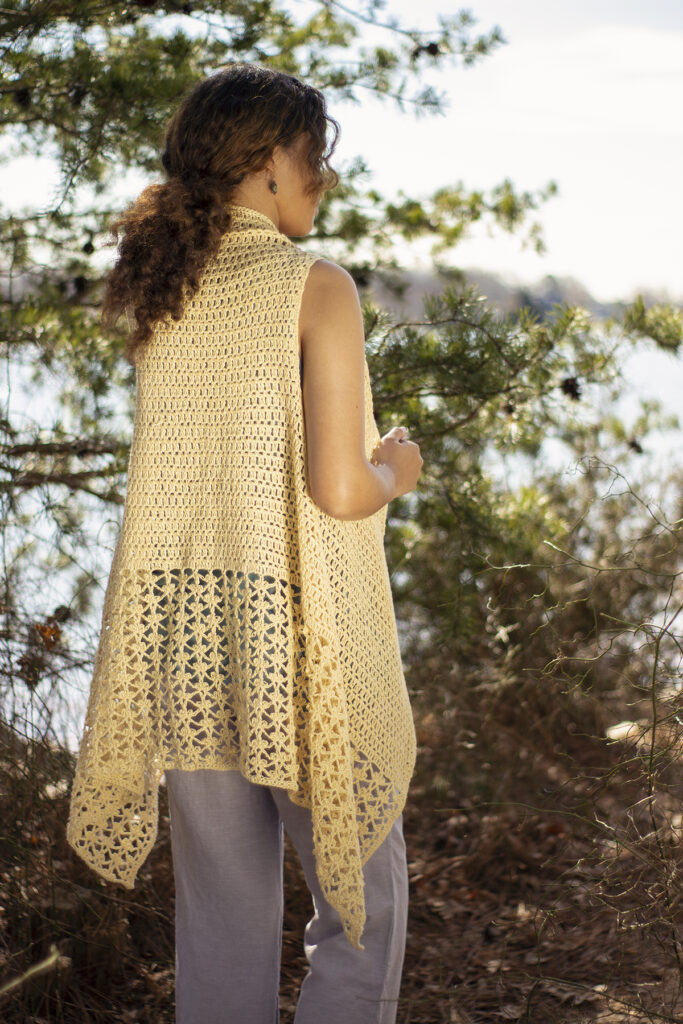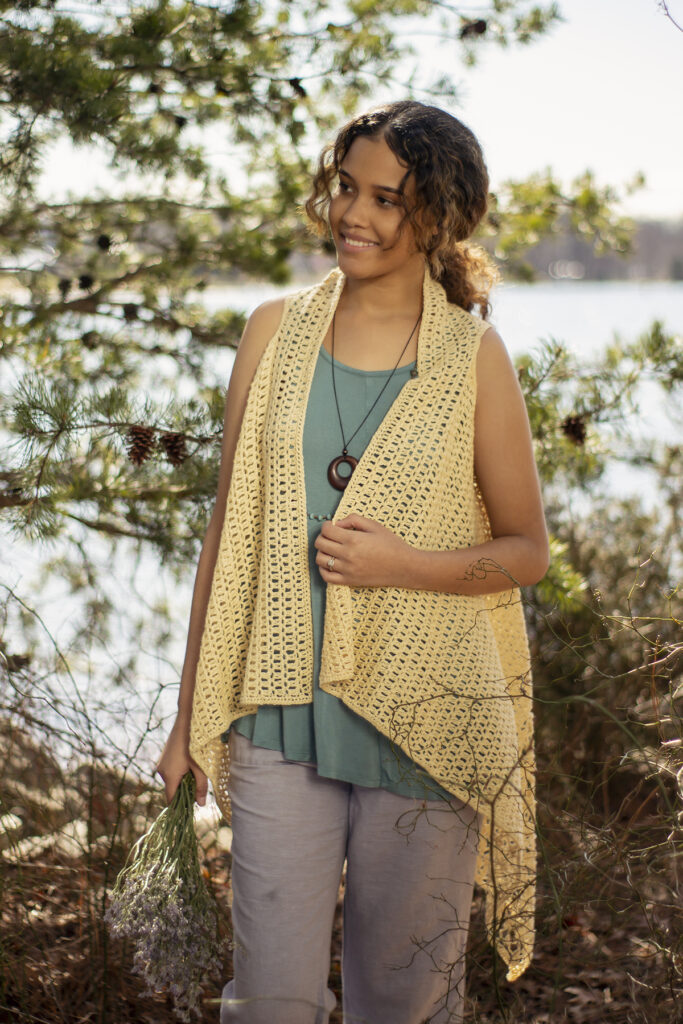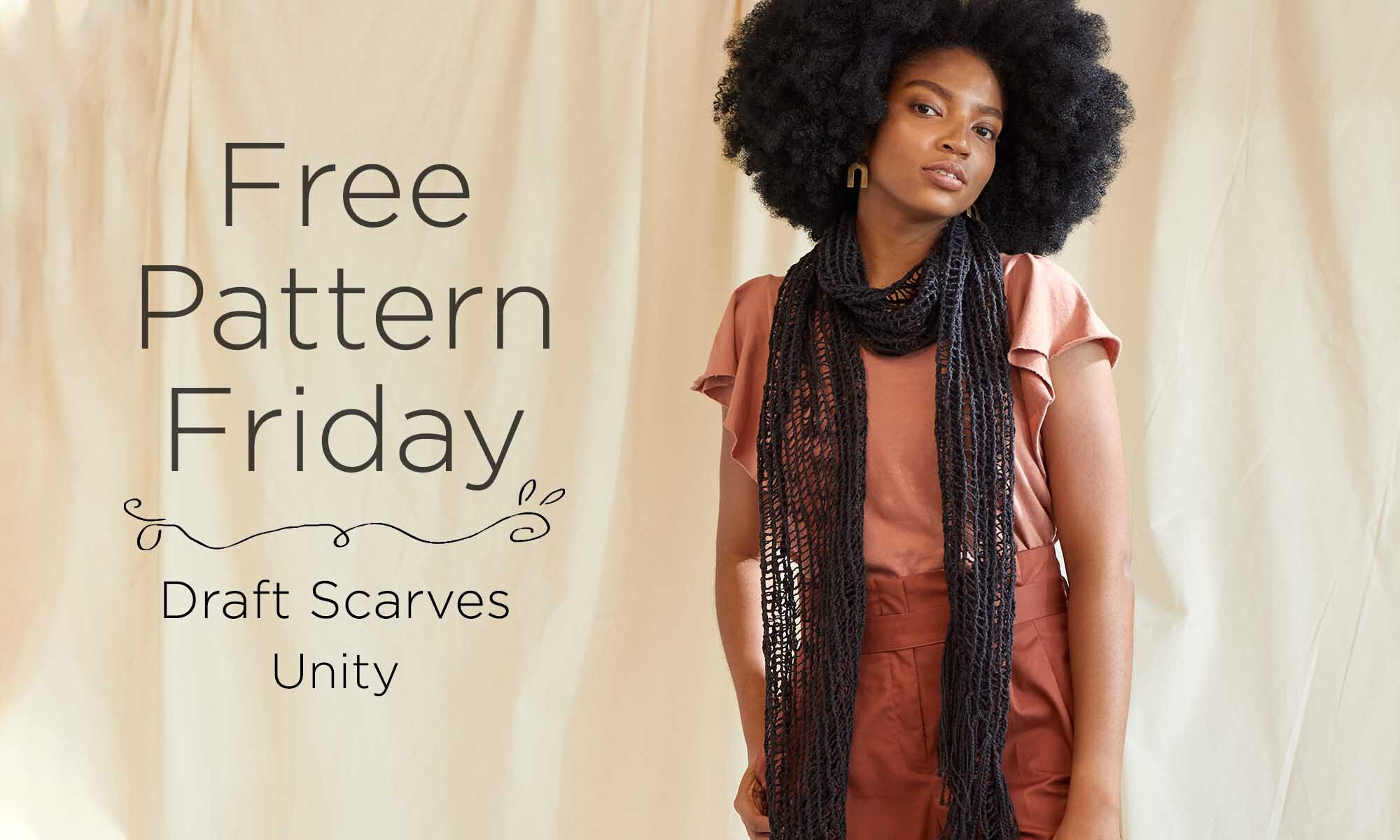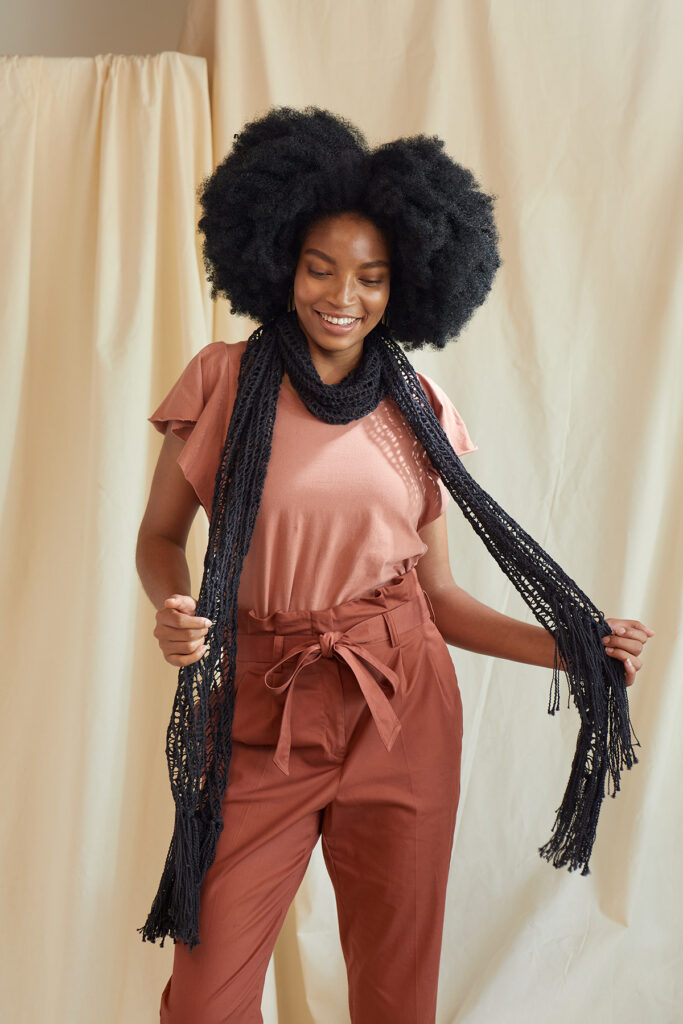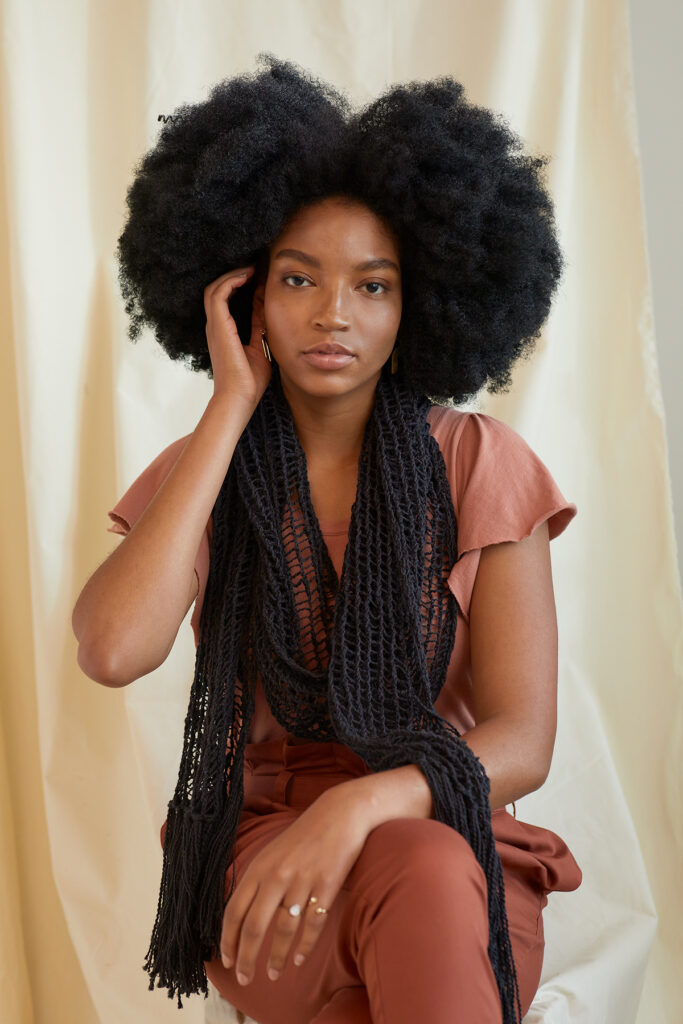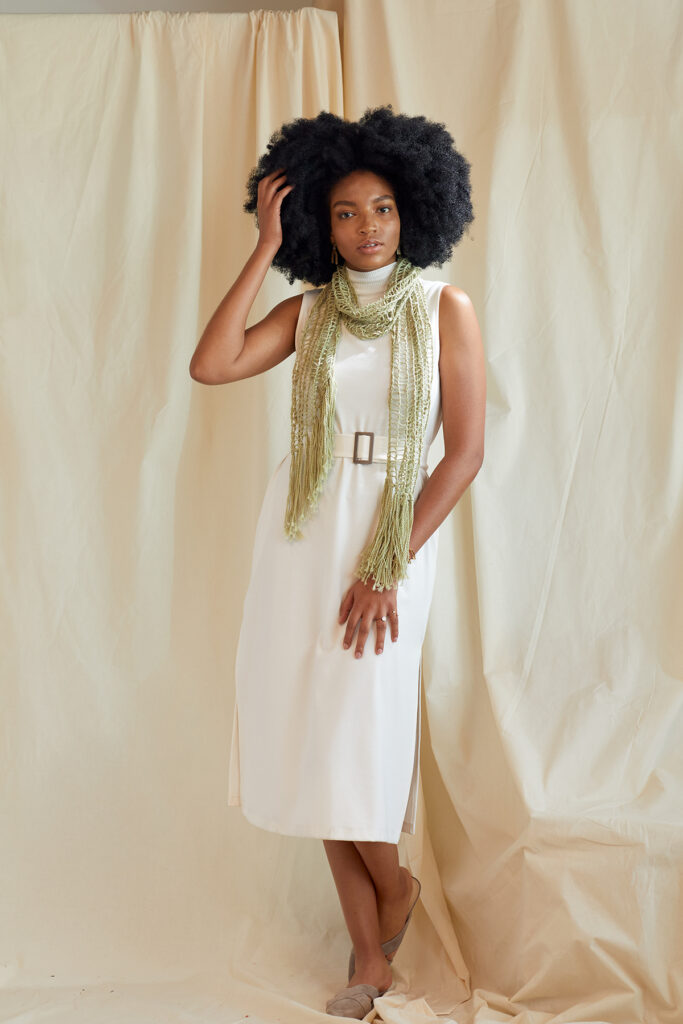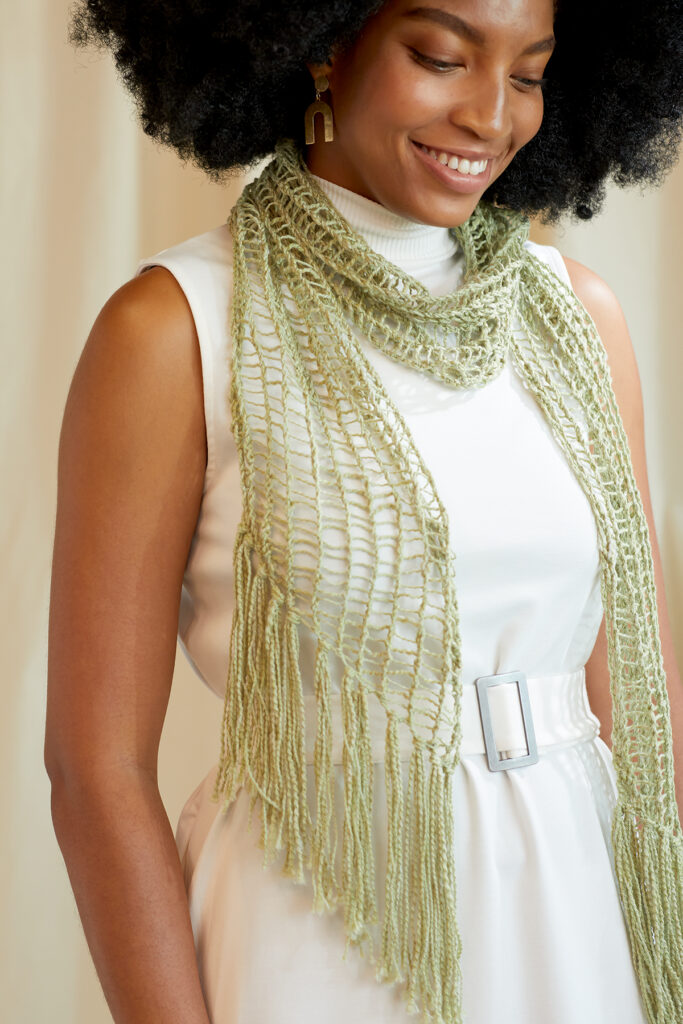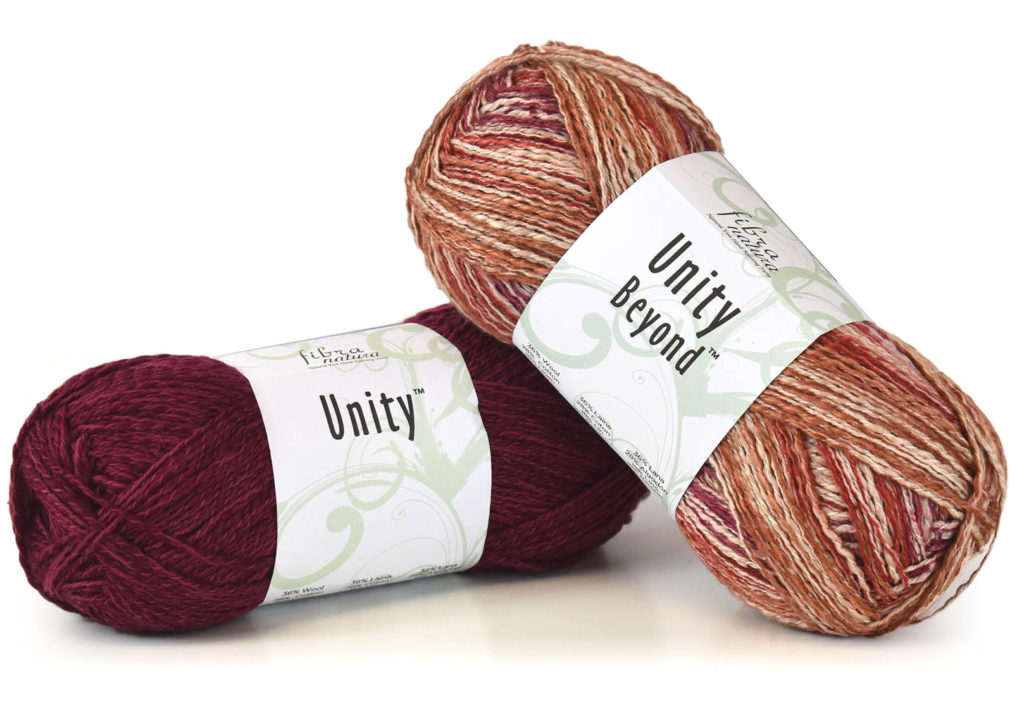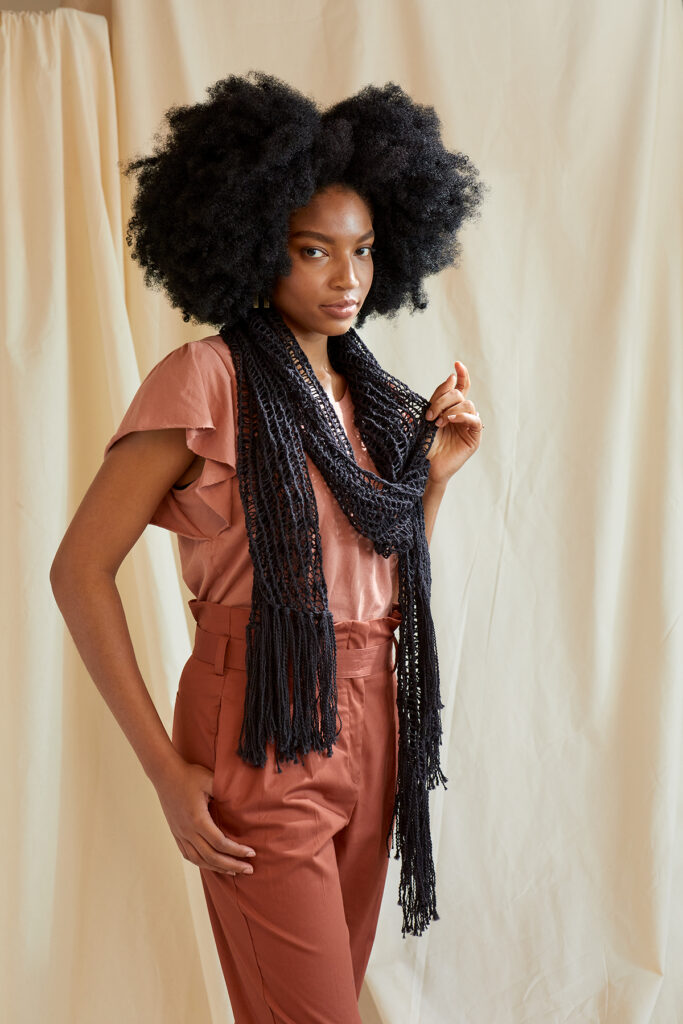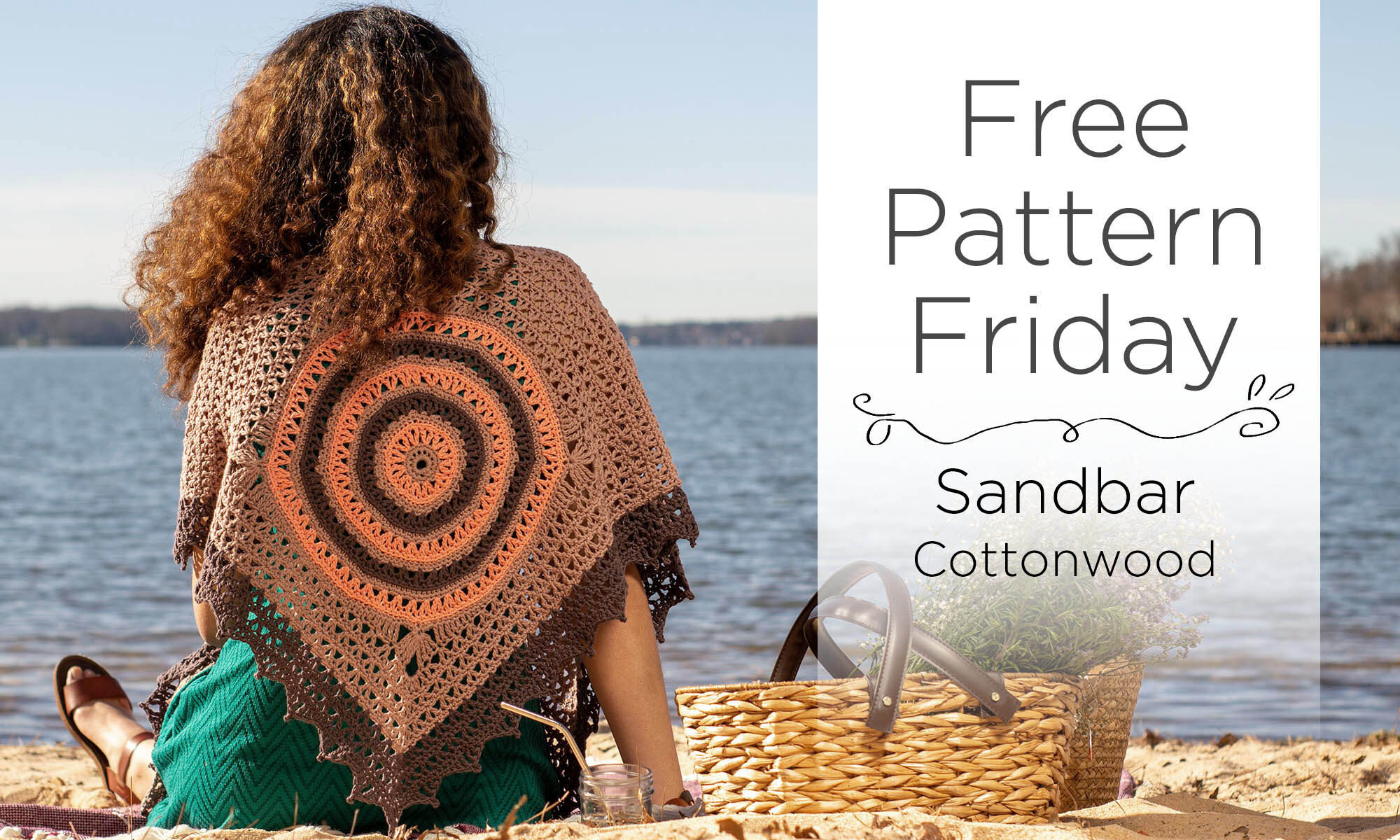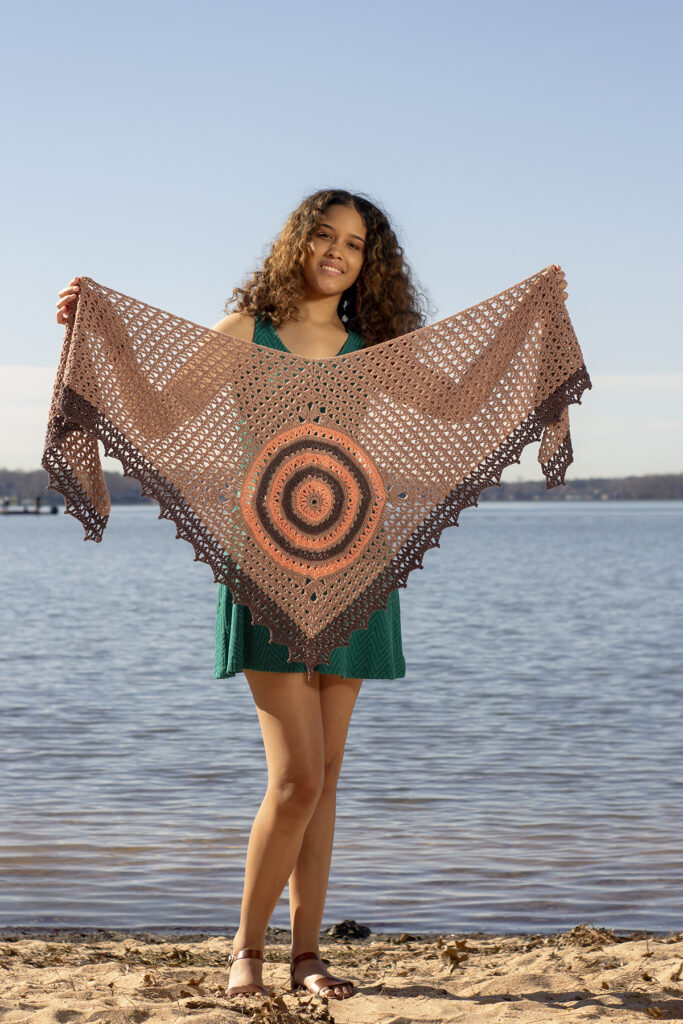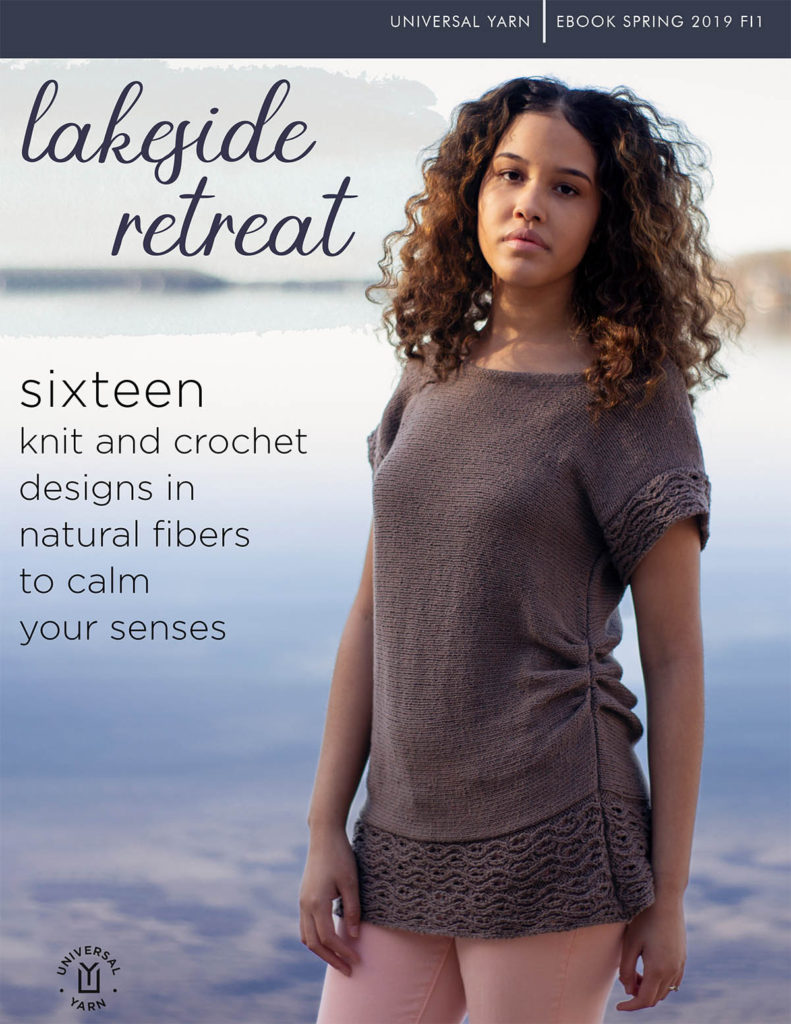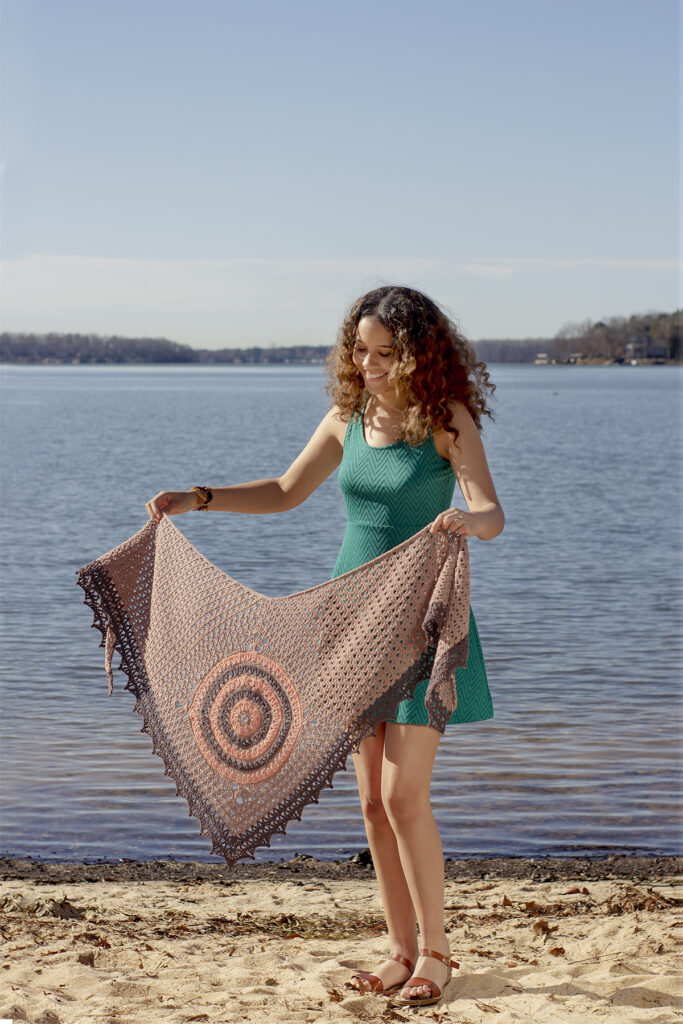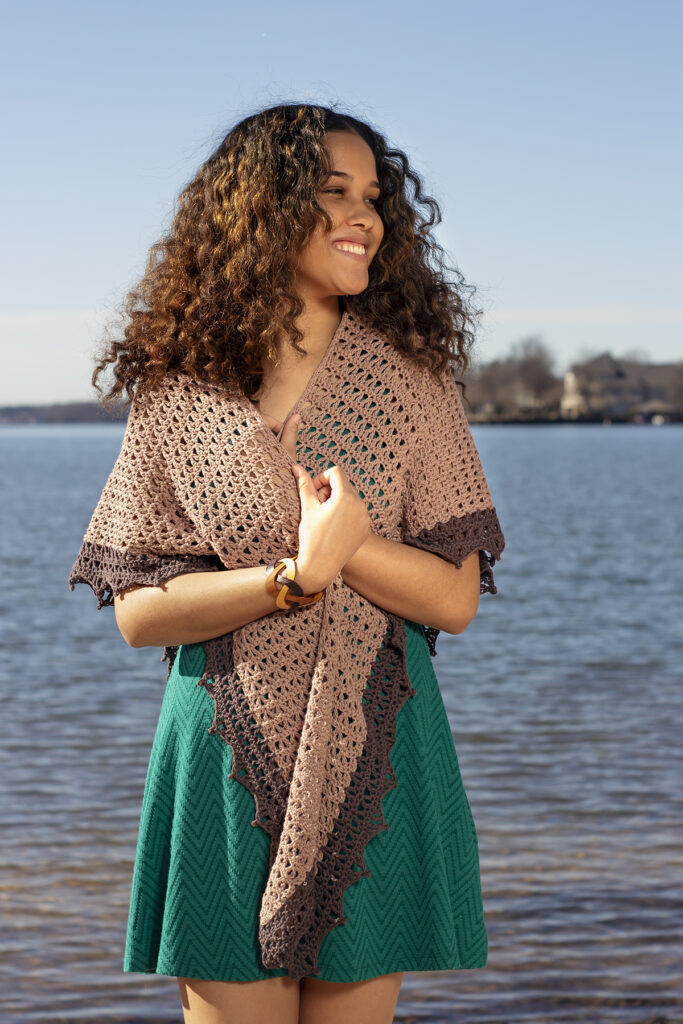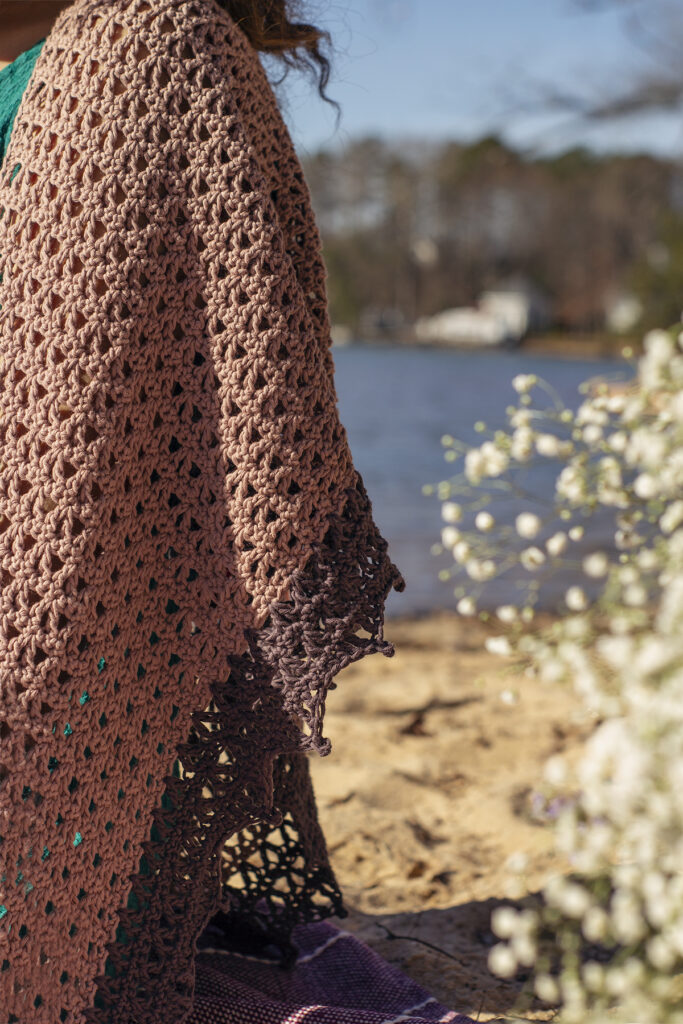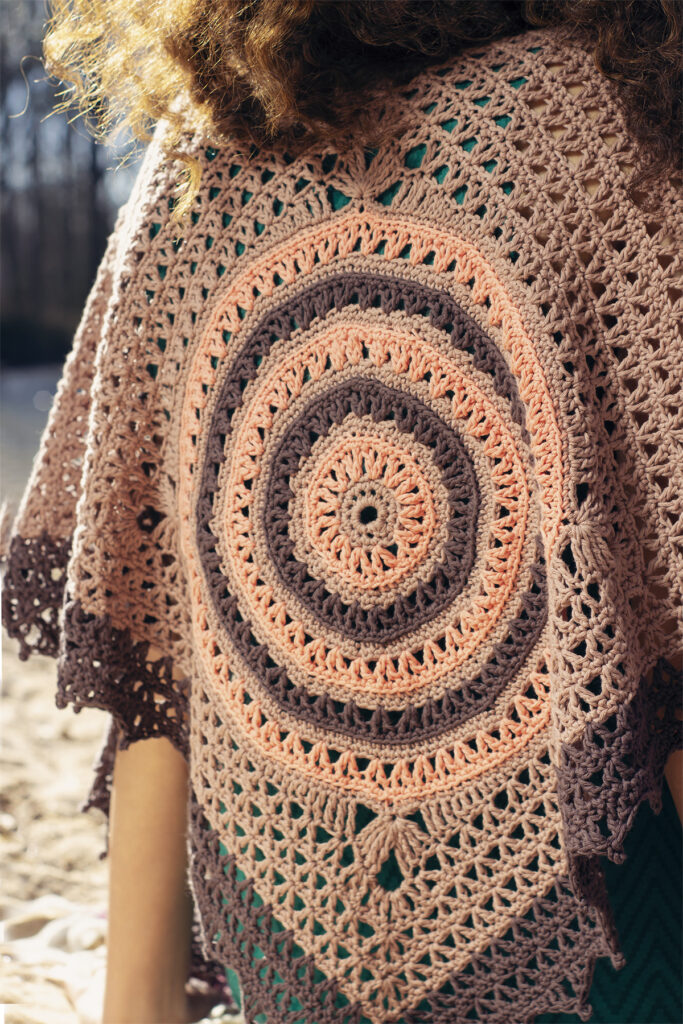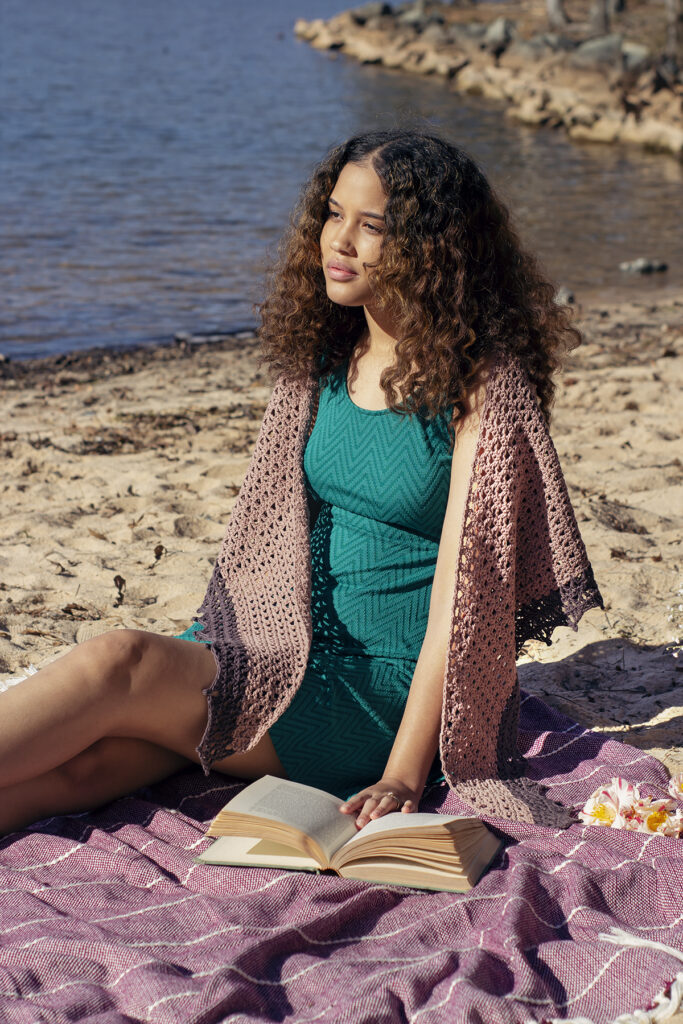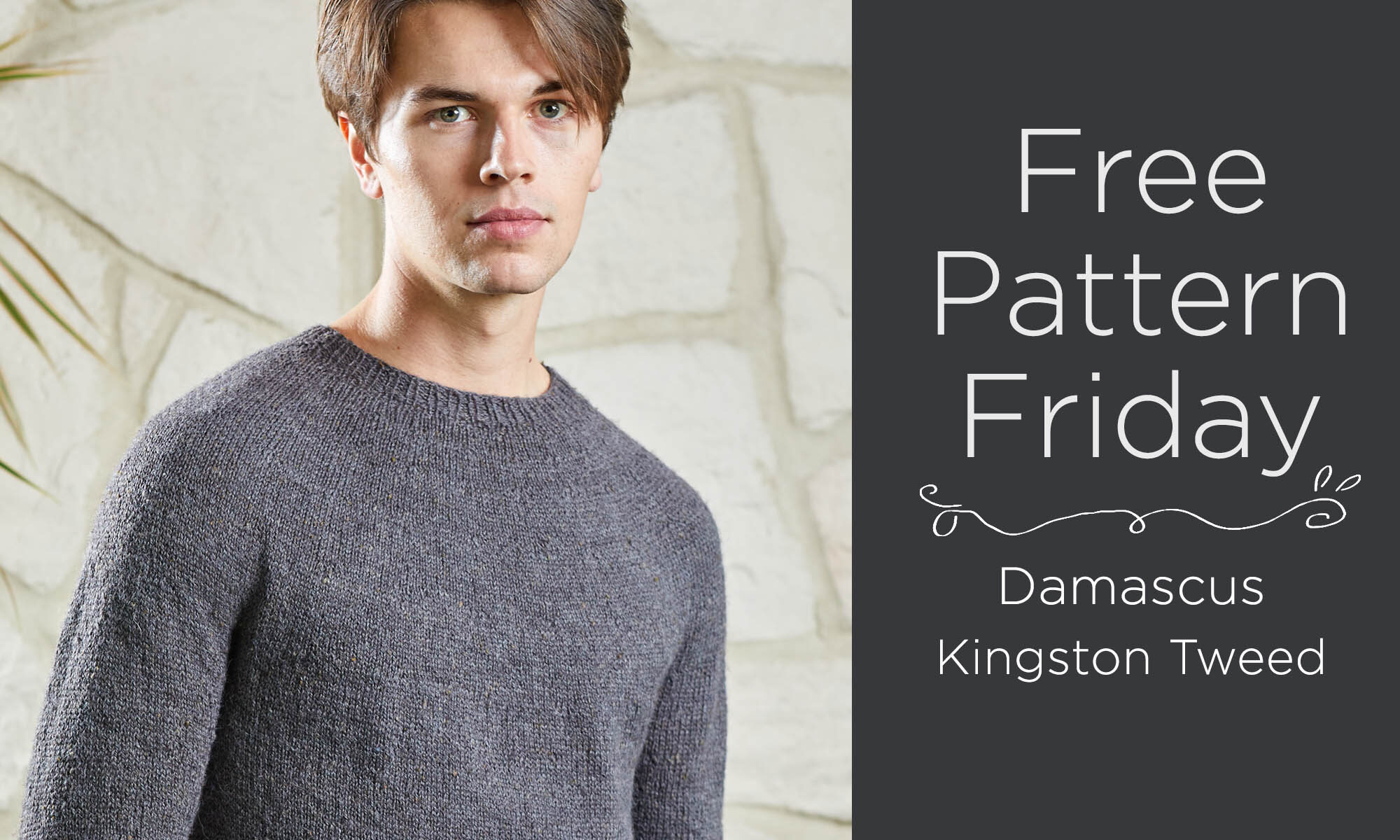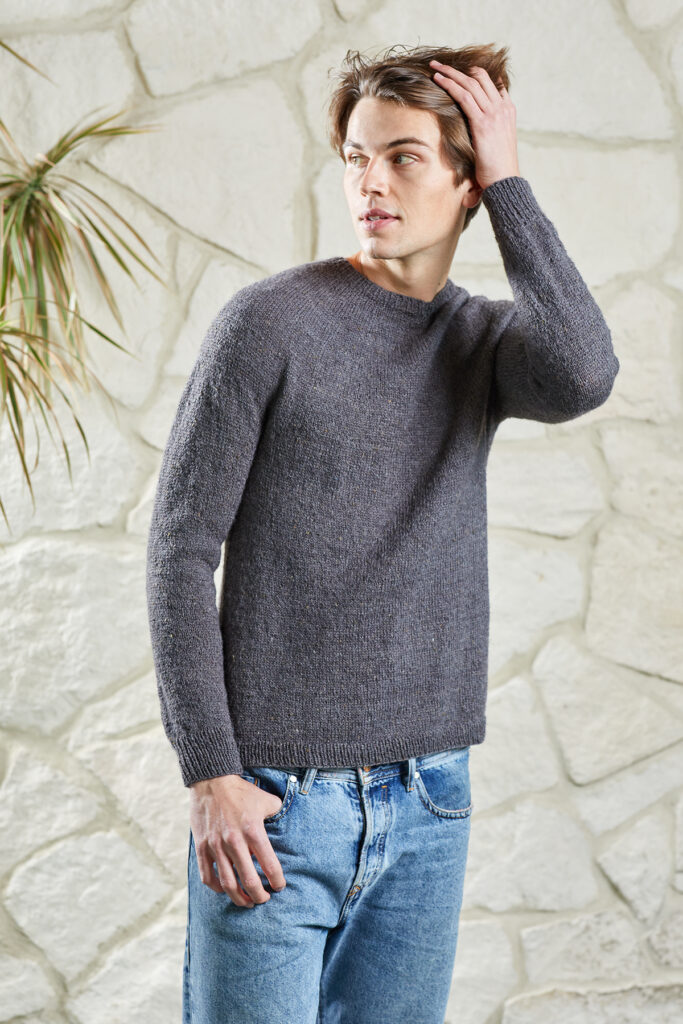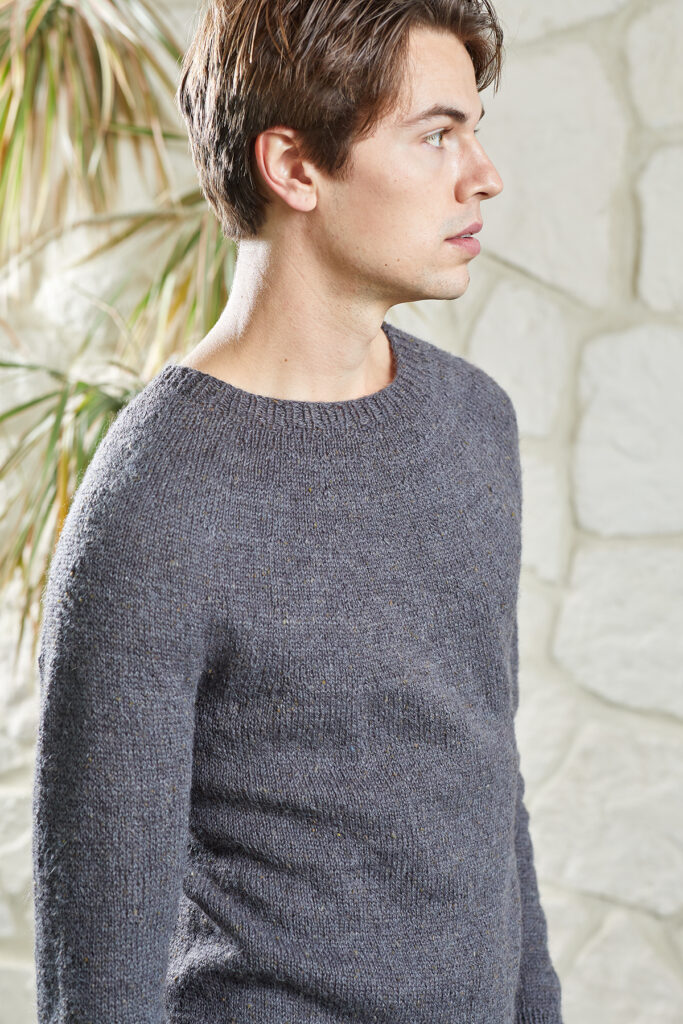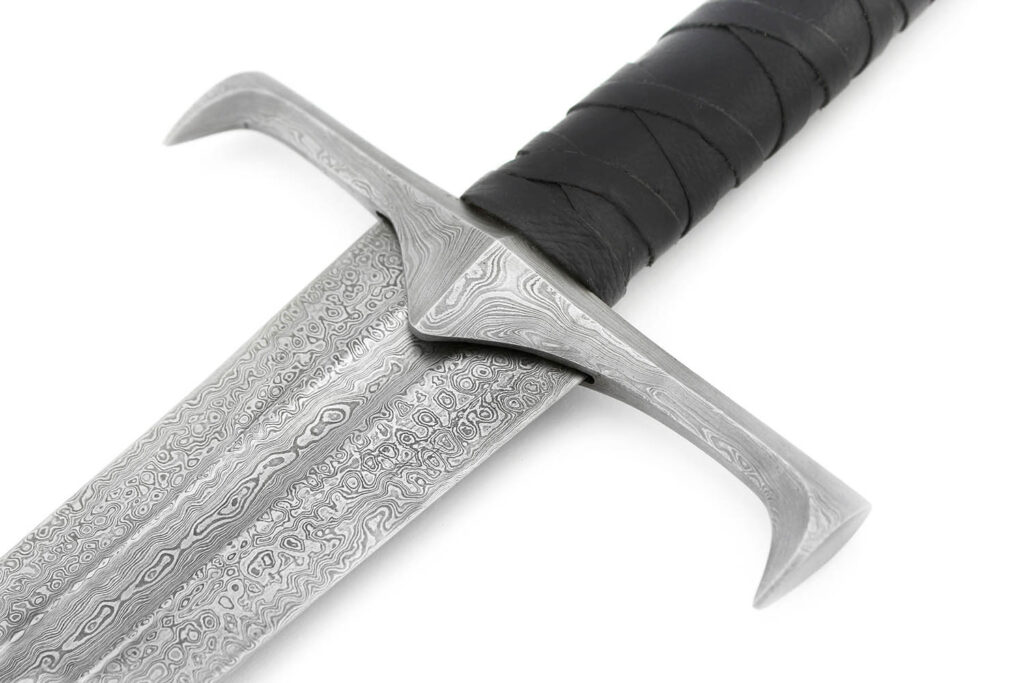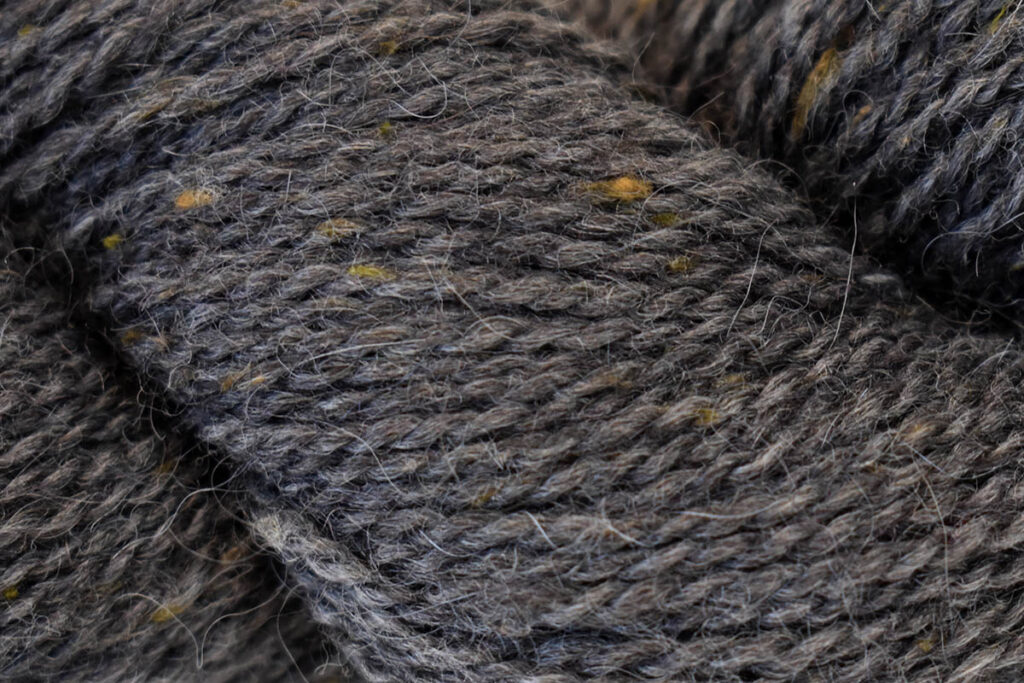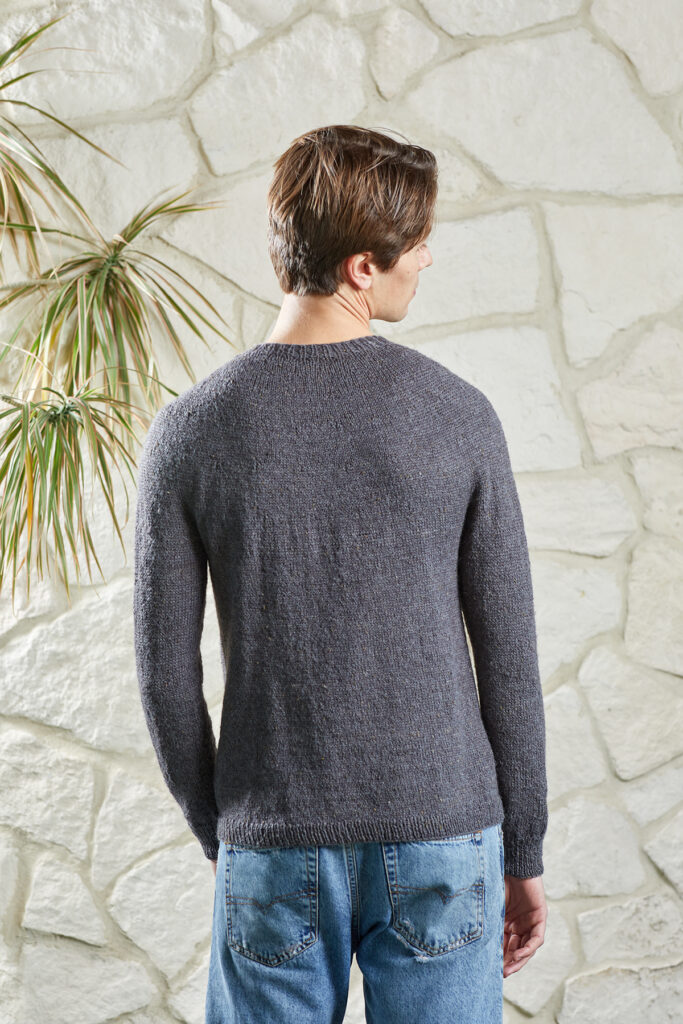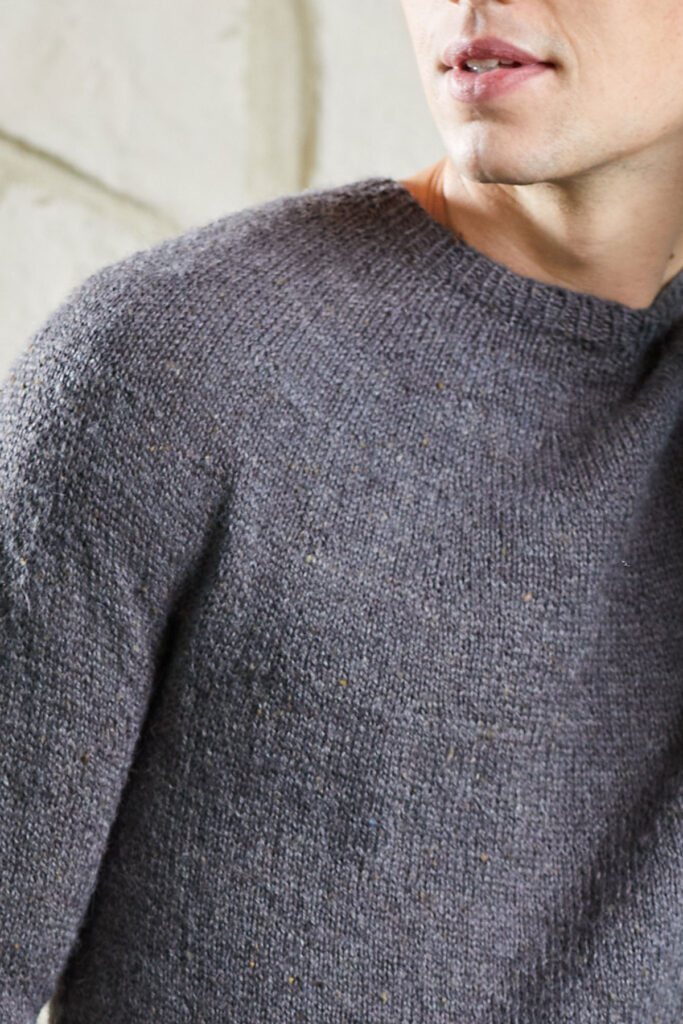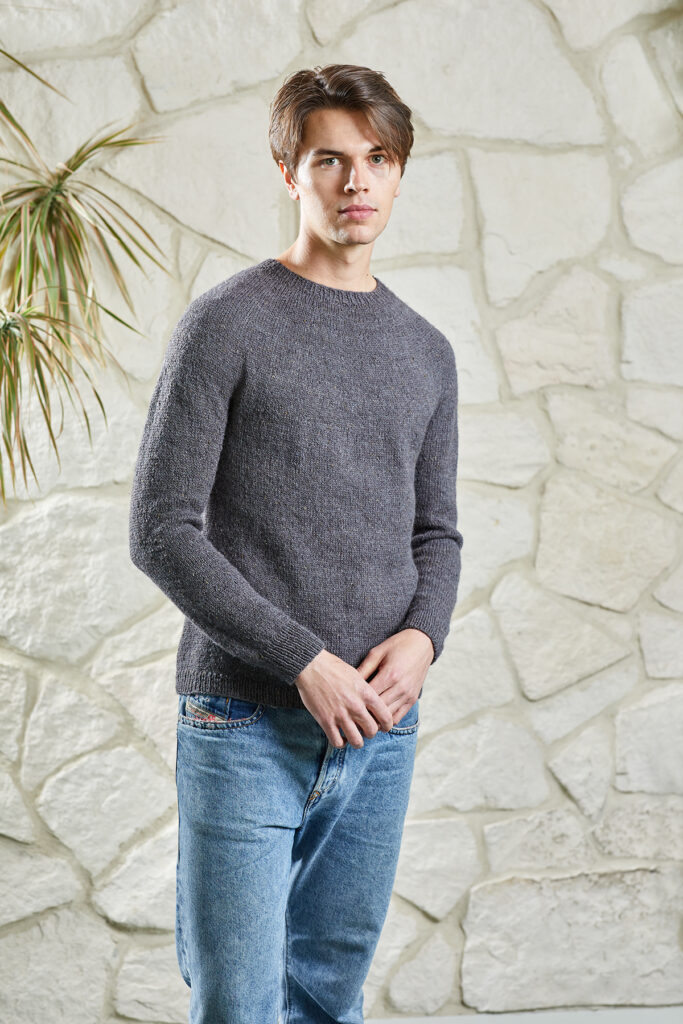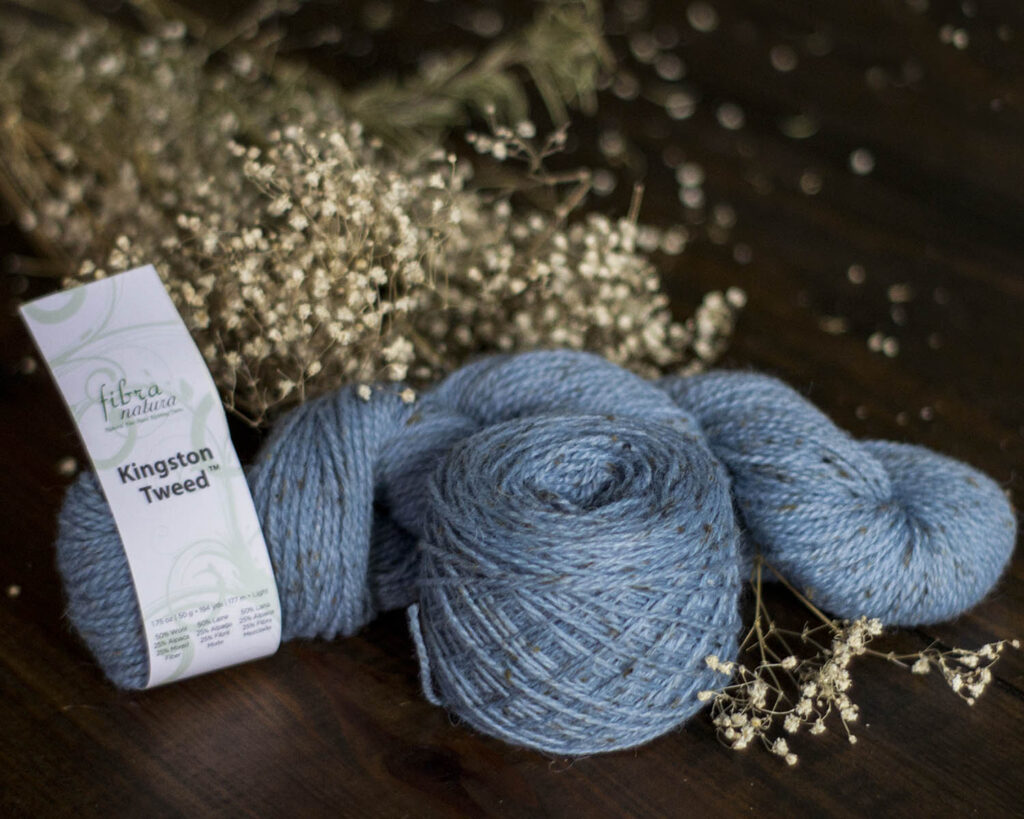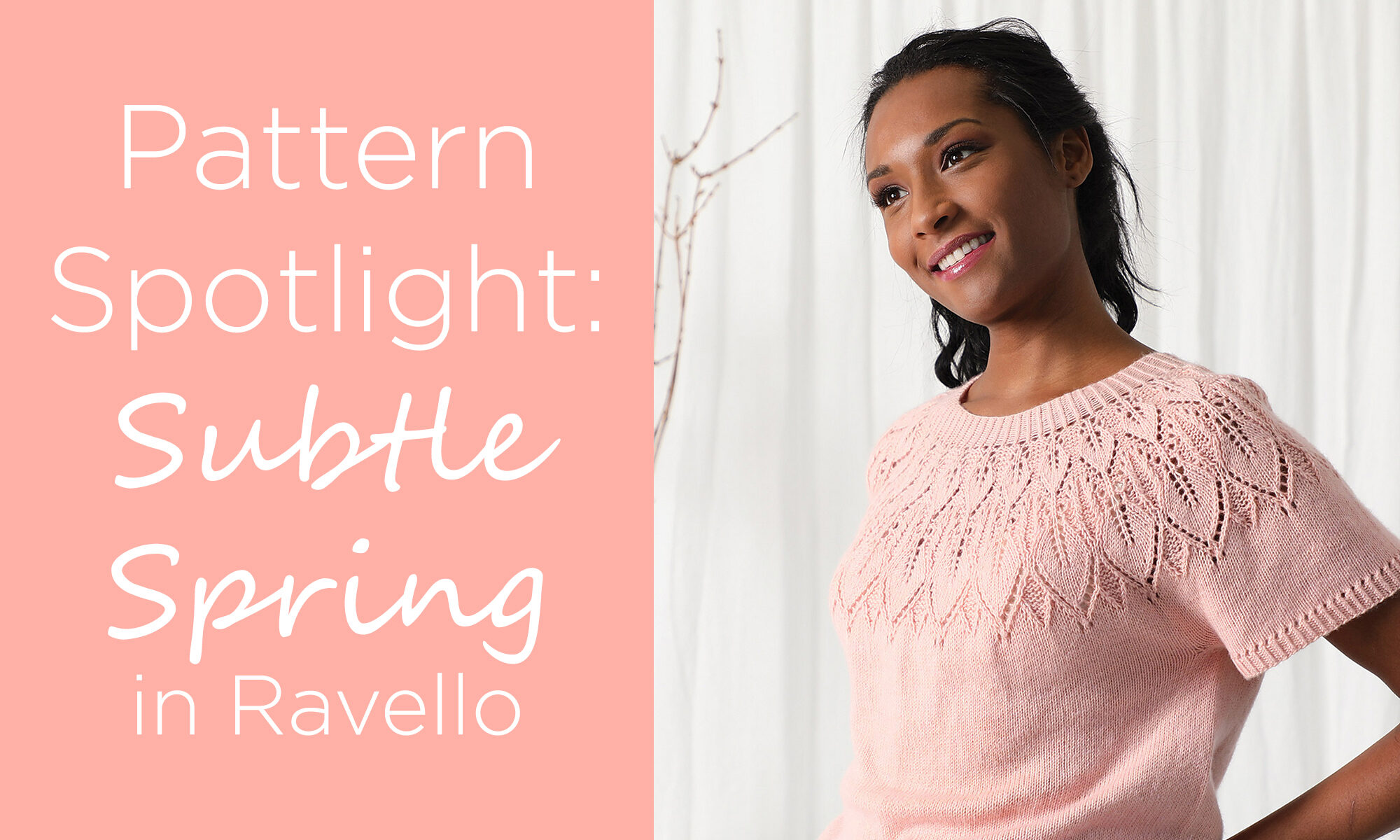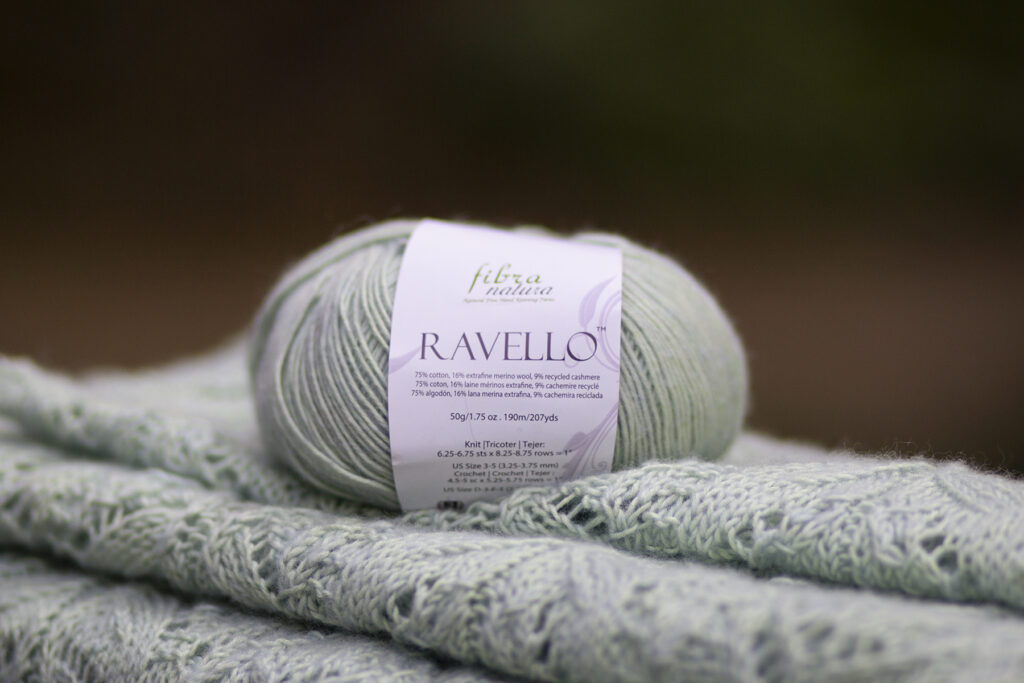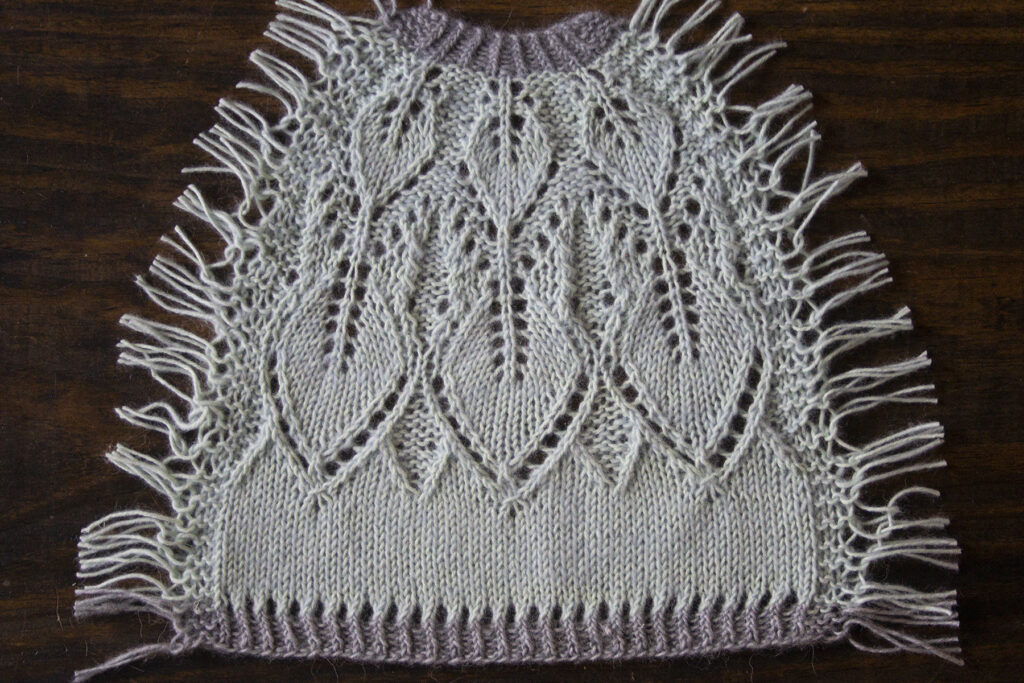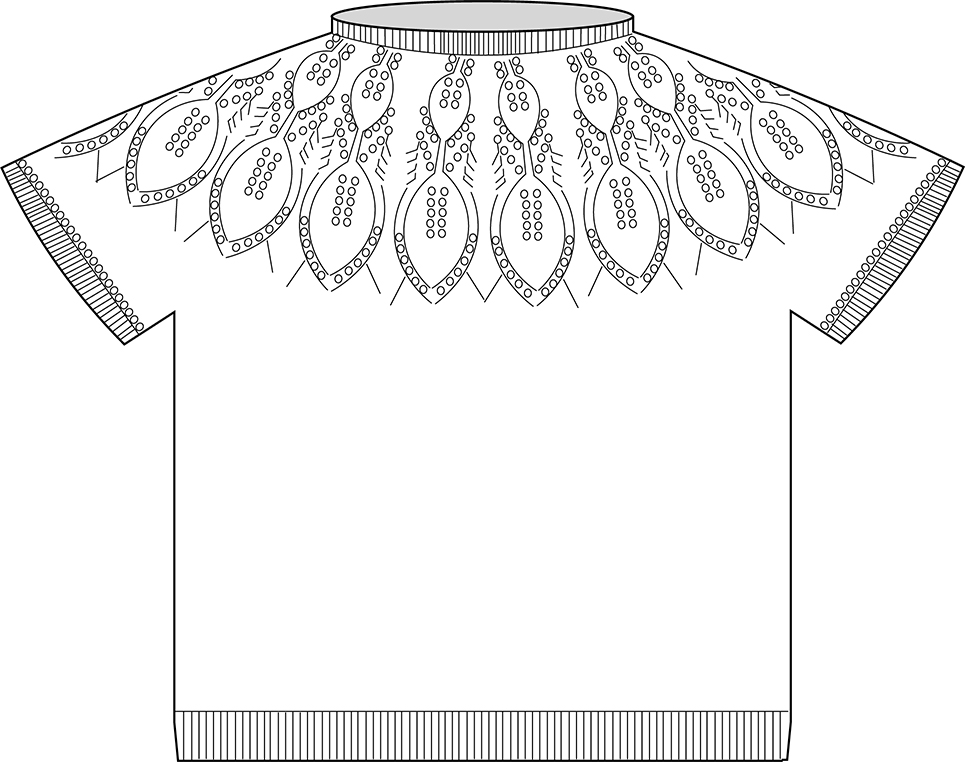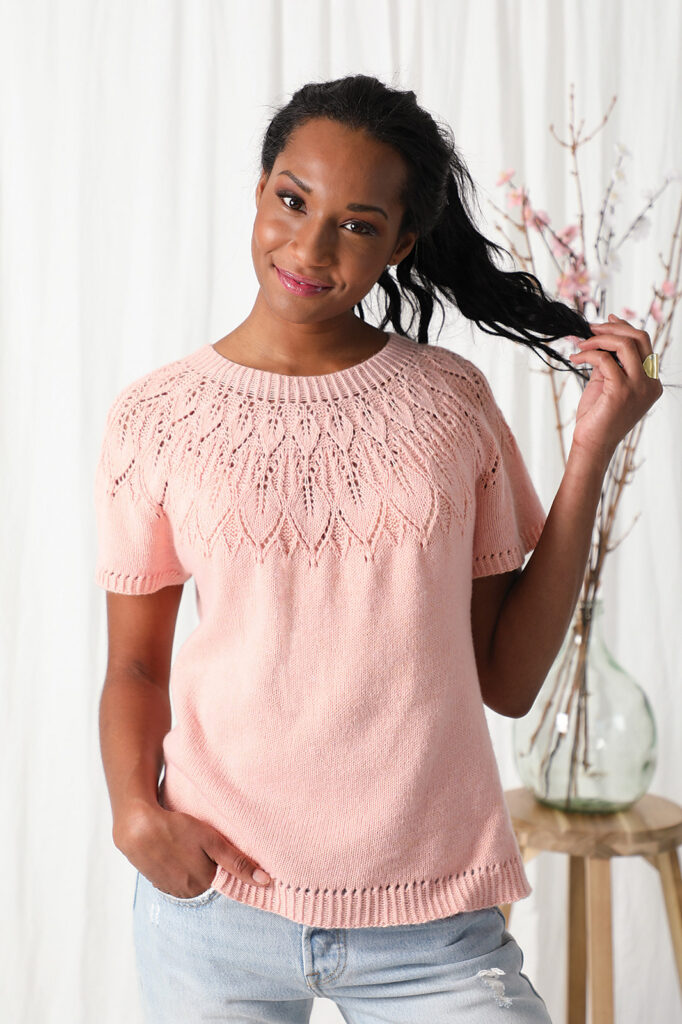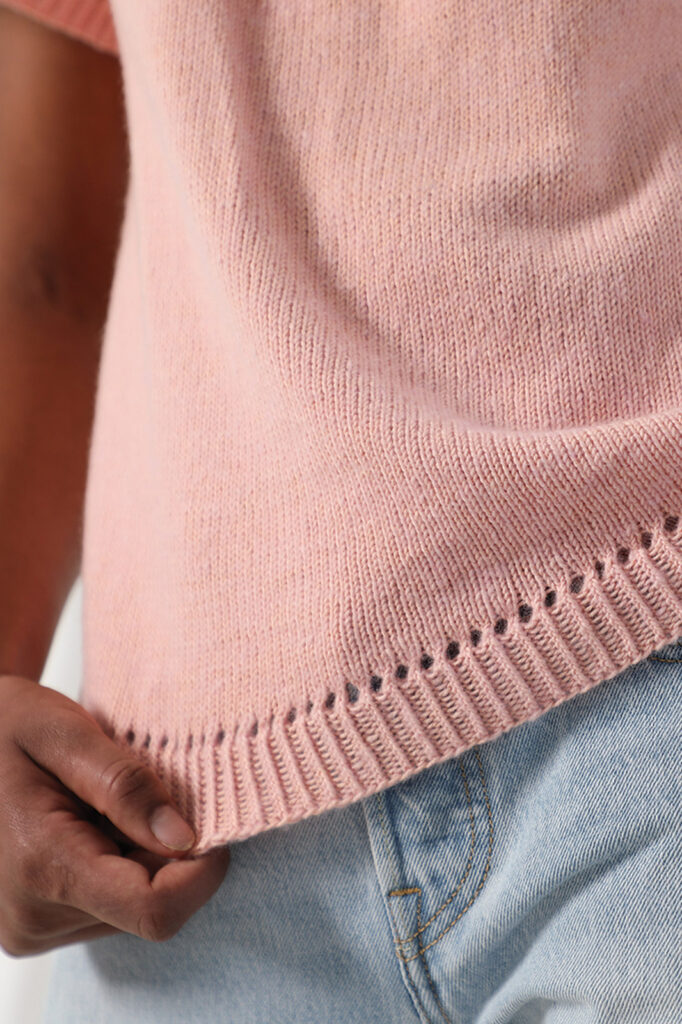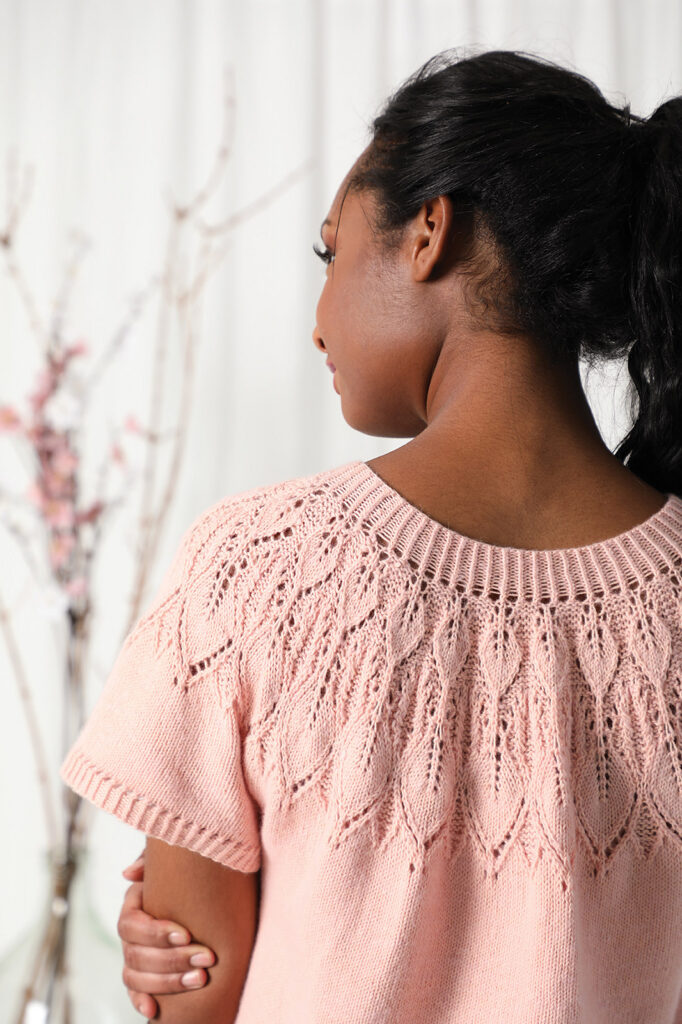Have you seen our recently published free pattern, the extra special Pebbled Pathways in Cobblestone? Well, today we’re going to give it some well-deserved spotlight!
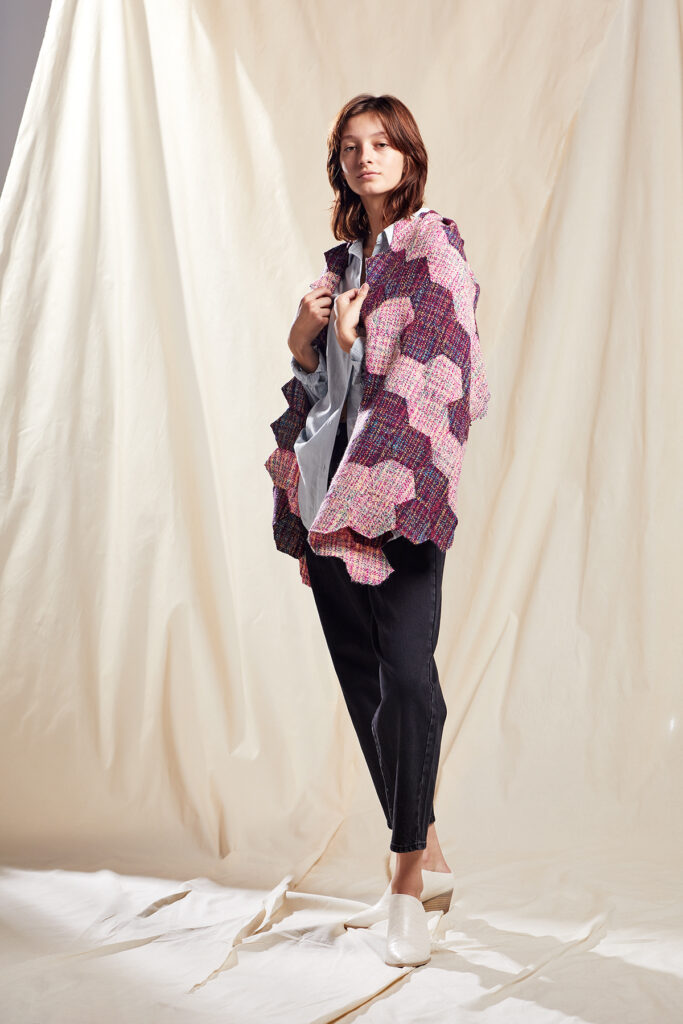
Pebbled Pathways (pattern link) has been in the works since late Spring, and I am so excited to finally be able to reveal this unique, gorgeous pattern! It is designed by Gabi van Tassel, who is known for her stunning pin loom designs. Her work has been published regularly in weaving publications, including Little Looms and Handwoven magazines. We touch base on a semi-regular basis, and she always has wonderful things to say about our yarns and is such an enthusiastic fiber artist. As soon as we received Cobblestone, I knew I wanted to partner with her for a truly special project. I essentially sent her yarn, asked for some kind of wrap, and this colorful stole is the result! But, in addition to asking her to create this design, I asked her to write a guest post for our blog. So enough of what I have to say…let’s hear from Gabi herself!
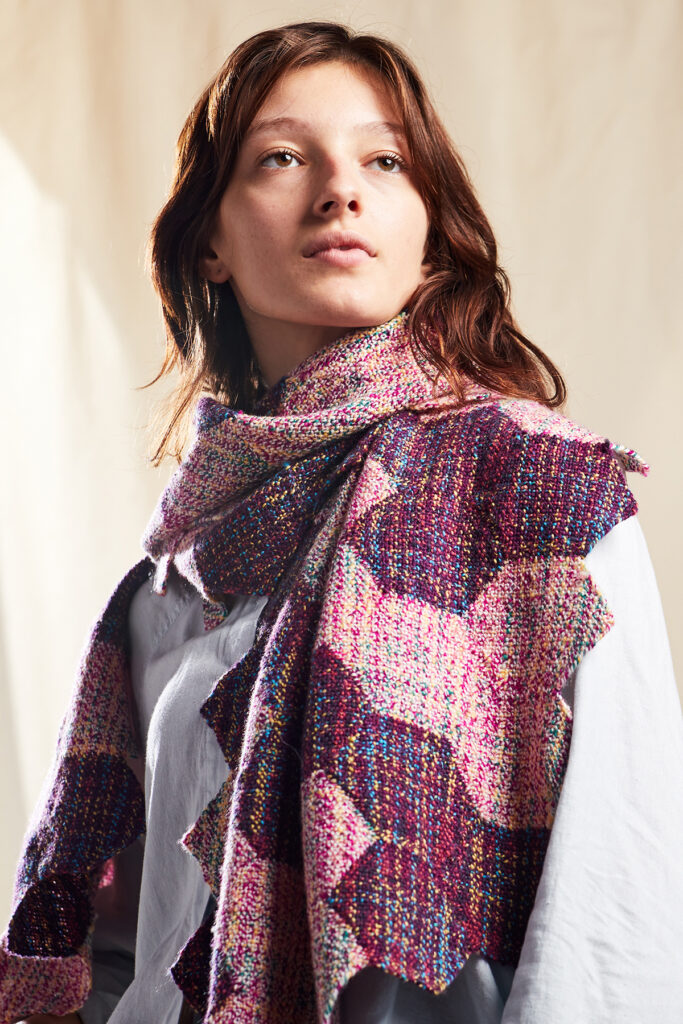
From Gabi:
“It was a thrill when I received a small package from Universal Yarn a few months ago, with some brand-new Fibra Natura yarn and the question “Would you like to weave something with this?” I sure would!
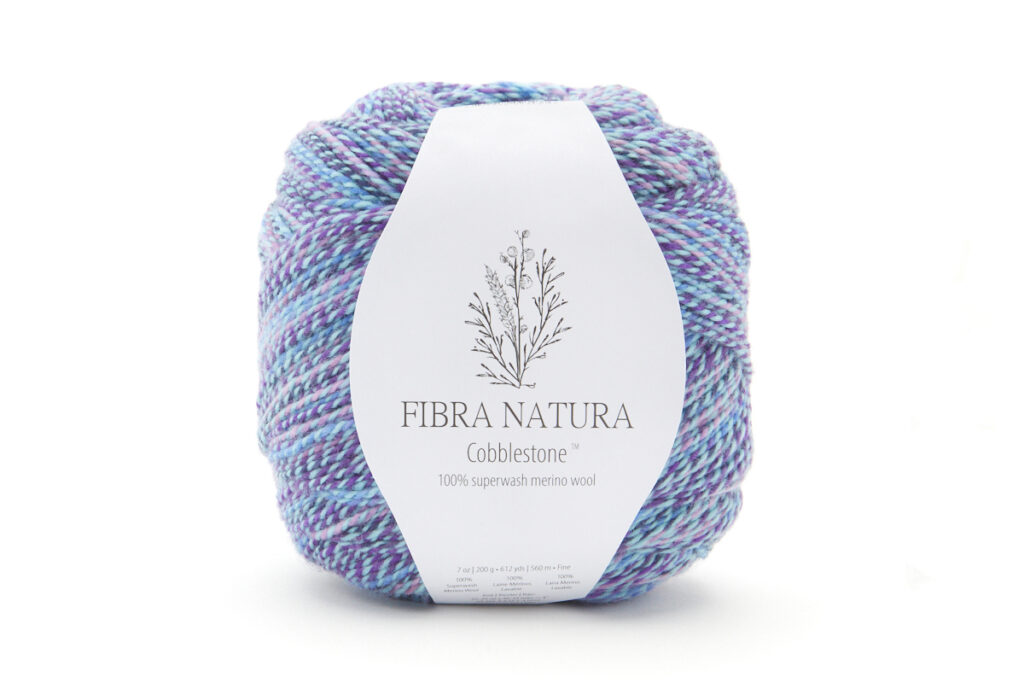
But let me quickly share with you how we got here: Among other crafts, I like to weave hexagons on pin looms. My first design using Universal Yarn was a Grape Table Topper, published in Easy Weaving with Little Looms 2018. I used Universal Yarn Classic Shades [now discontinued, but Colorburst is a great substitute] at the time, which provided the perfect color run to express grapes.
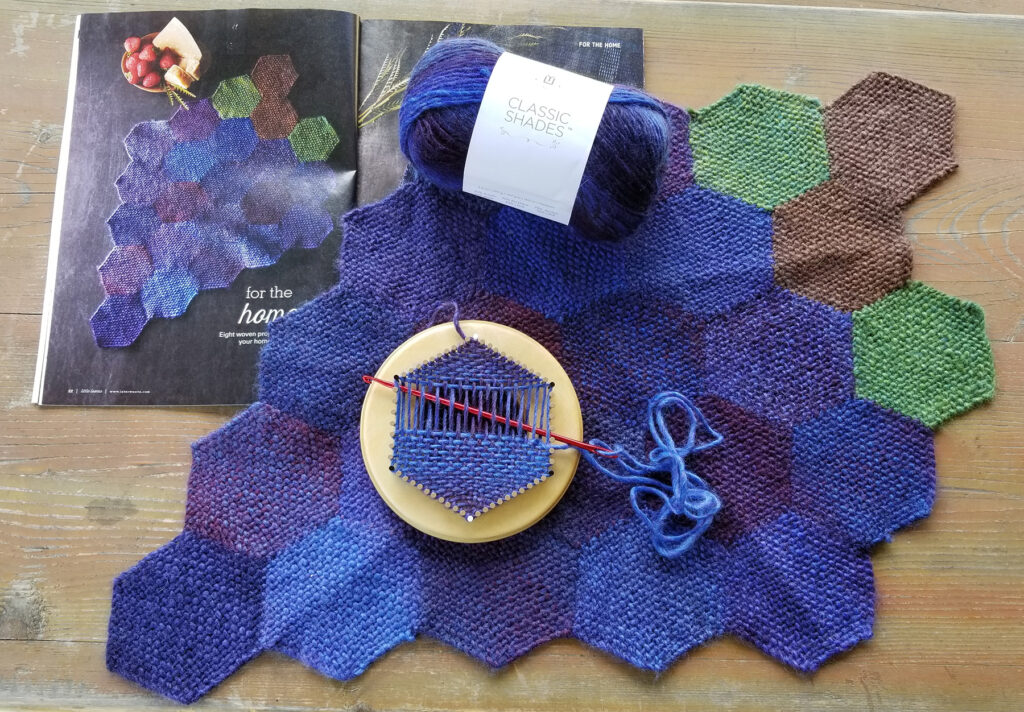
Other projects have followed since then, including the recent Raffiametry placemats in Easy Weaving with Little Looms Summer, 2021 using Yashi and Yashi Iro, the best raffia yarns that I’ve seen so far.
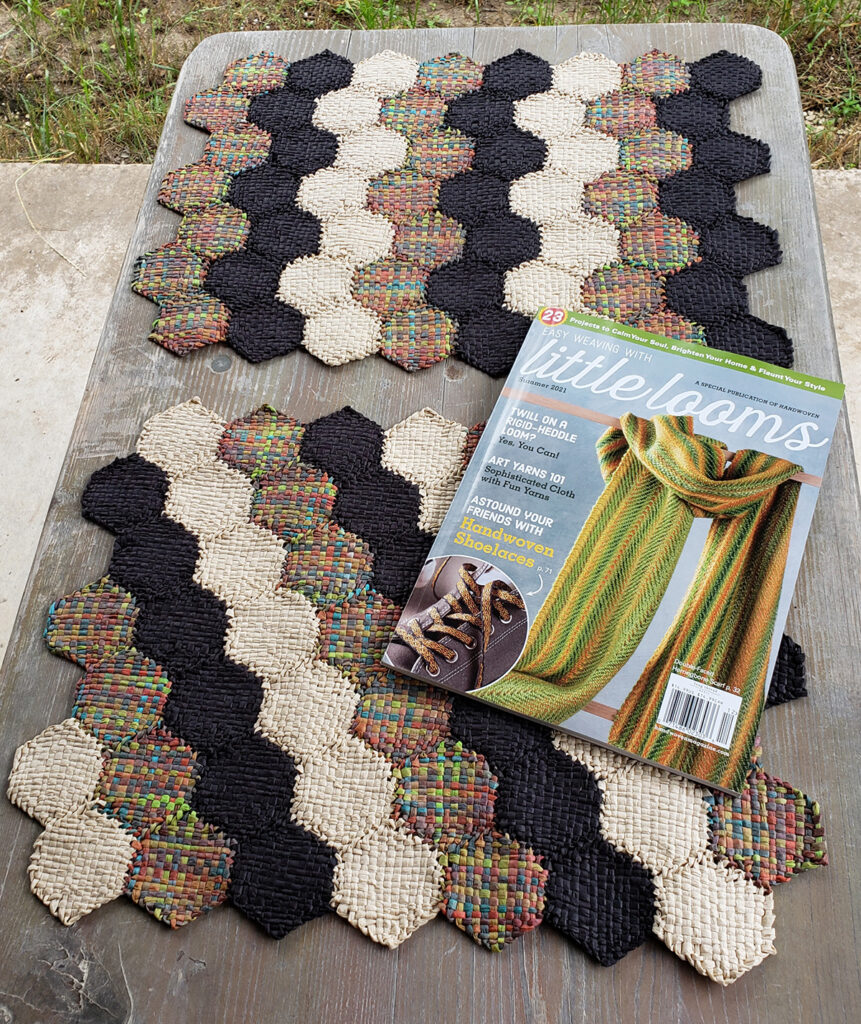
Back to the package that I received: The yarn was a sample of the new Cobblestone yarn, which hit me like a rocket with inspiration. The name reminded me of the old streets in Germany, where I grew up. I always loved the calming geometry of those streets, and I often thought about how each of these stones was carefully put in place by skillful crafty hands. I wanted to capture that meditative thought in a shawl with the new yarn.
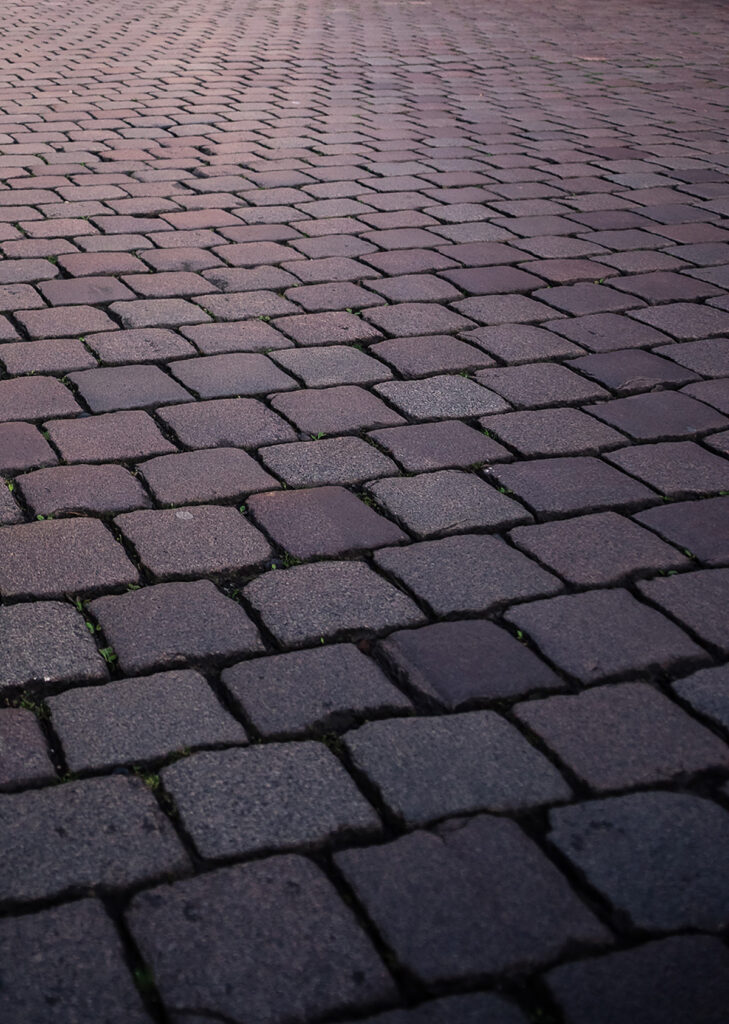
In case you are not familiar with pin loom weaving, it is a form of weaving where the crafter uses a small handheld loom to create shaped fabric pieces. Traditionally, pin looms wove 4” squares, but today there are many shapes, including rectangles, triangles, diamonds, and hexagons, in multiple sizes.
Just because these looms are small, doesn’t mean that you can’t craft serious projects. Pin loom weaving is modular weaving. Join the smaller woven units to make any item that you can imagine … for example, Pebbled Pathways!
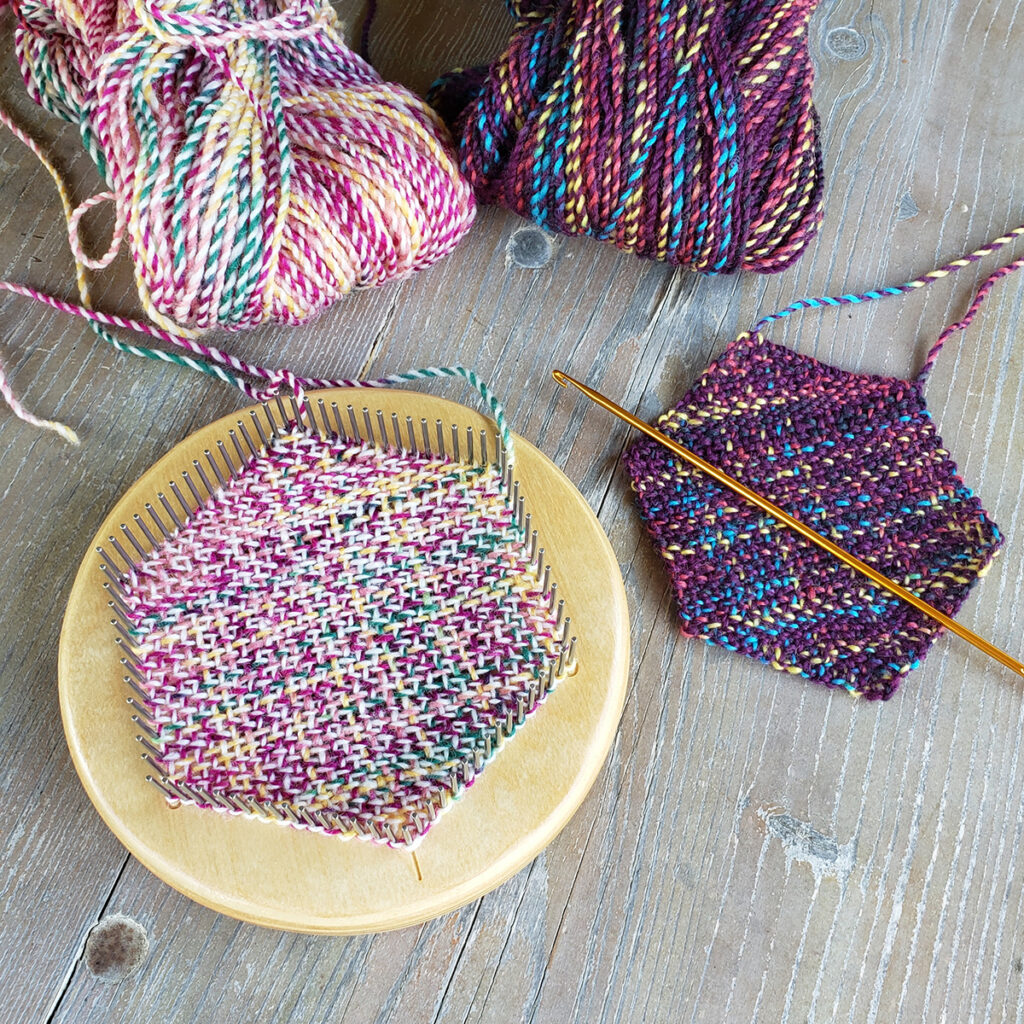
The shawl is designed to make the best use of two balls of Cobblestone. The put-up is a generous 200-gram ball boasting 612 yards of 2-ply, 100% merino wool. The project requires one ball each of colors 103 Mardi Gras and 104 Tulip, with about 1 oz of each left over in the end. You can choose any other two colors of course. I recommend that you pick colors with contrast, to maintain the cobblestone characteristics in the design.
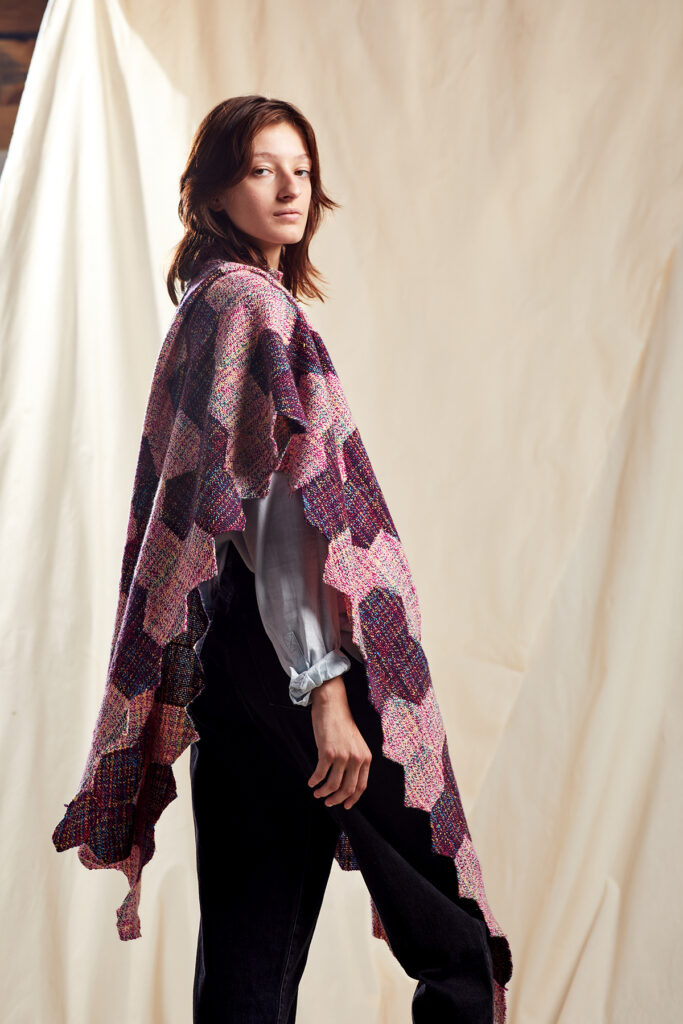
Weaving is easy. All of the hexagons are plain weave, worked on the Original TURTLE Loom™ in “F-fine sett”. The vivid color changes of the variegated yarn make each hexagon unique. The colors are well-curated and distributed in a way that the hexagons blend in with each other to make a smooth fabric.
The yarn is a delight to weave. It is soft and glides well while pin loom weaving. It has just the right amount of elasticity, not stiff and not too stretchy. The light twist is perfect to gently bloom into a nice, soft fabric with a good drape.
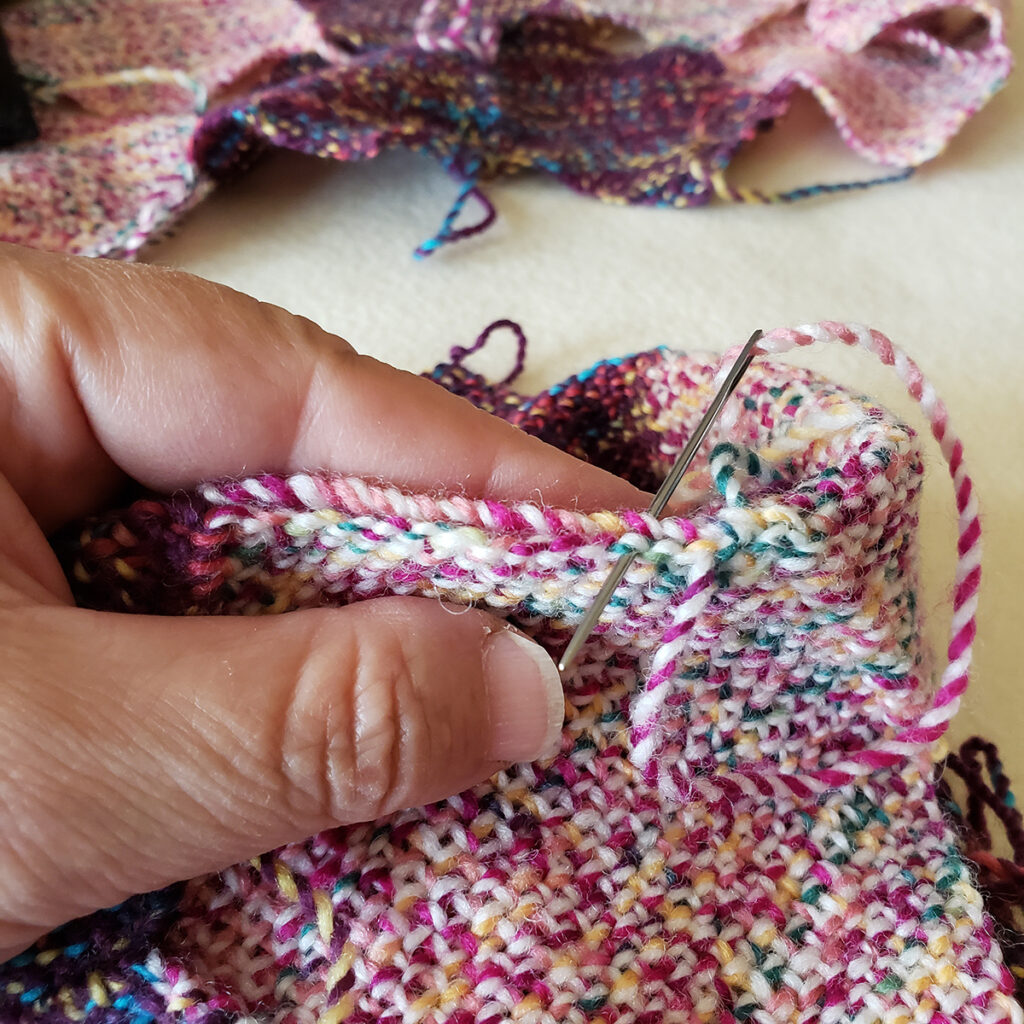
Crafters sometimes hesitate the task of joining pin loom woven shapes. However, hexagons are actually easy to join because they have smooth edgings. The sides are short enough to hold by hand: just match up two hexagons by their sides and sew them together with about 10-12 whip stitches.
If you would like some help with joining hexagons, check out the video “Joining 101: Sewing Two Hexagons Together” (https://youtu.be/PuD2wv1DdIo). Or, if you are interested in the mattress stitch, see the joining part of “Making an Elf Basket”.
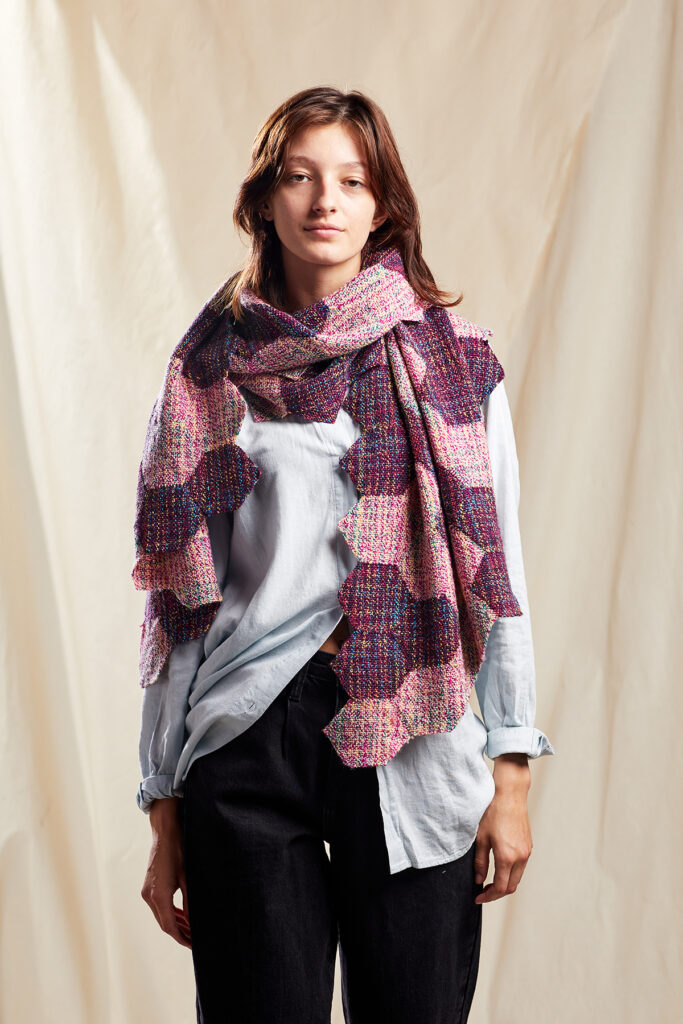
If you don’t feel like weaving through two whole balls of Cobblestone, let the modular character of pin loom weaving come to the rescue! You can make a slimmer wrap by weaving only four rows instead of six (blue marks).
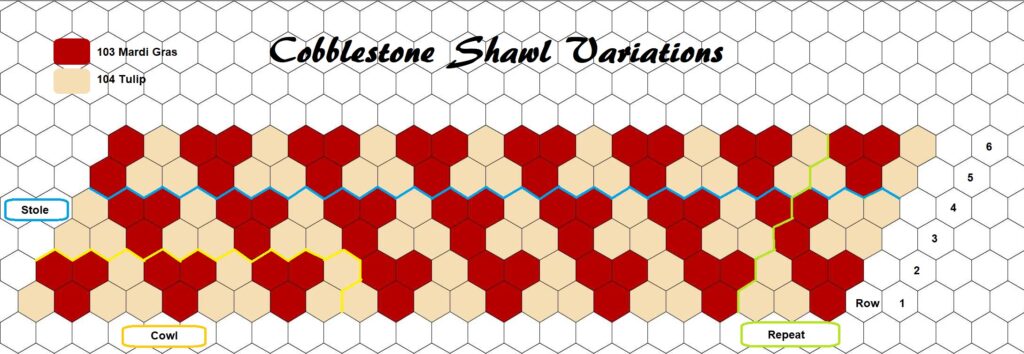
You can shorten or extend the length of the shawl by easily adding or subtracting a repeat of three hexagon columns (green marks).
Or – if you wish to make a small project at first – you can make a cowl, two rows high and nine hexagons in the round (yellow marks). Now, if you decide to make a cowl … and you like it … make another one for a friend … make a few as holiday gifts … Did I mention that there is a rabbit hole here?
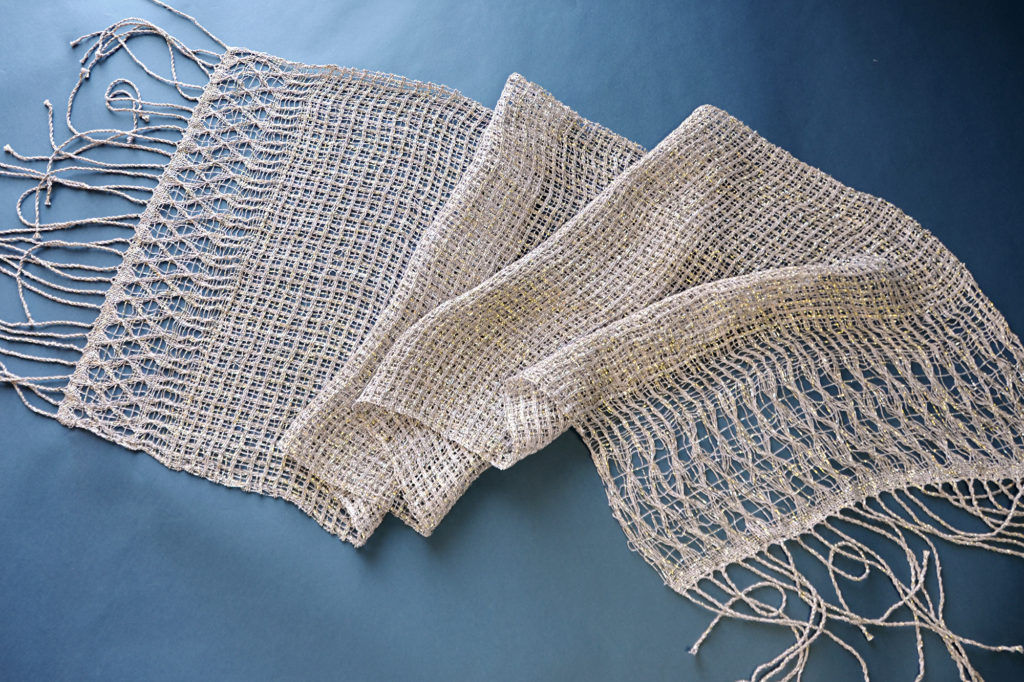
Many of Universal’s yarns are well-suited for weaving, and the Pebbled Pathways wrap just might be the beginning of more “oh, look what you can make” weaving projects. There is already Amy Gunderson’s beautiful Sparkle Windows shawl in Universe.
Next, Bamboo Pop is a popular yarn in the rigid heddle looms community because of its ease to weave, the lovely drape, and the stunning color effects. Then, there is also Ravello for a project with a touch of luxurious cashmere. Or, you could try the very practical Rico Design Creative Bubble that inspires pin loom woven kitchen and bath accessories.
Got a loom? Let’s weave! “
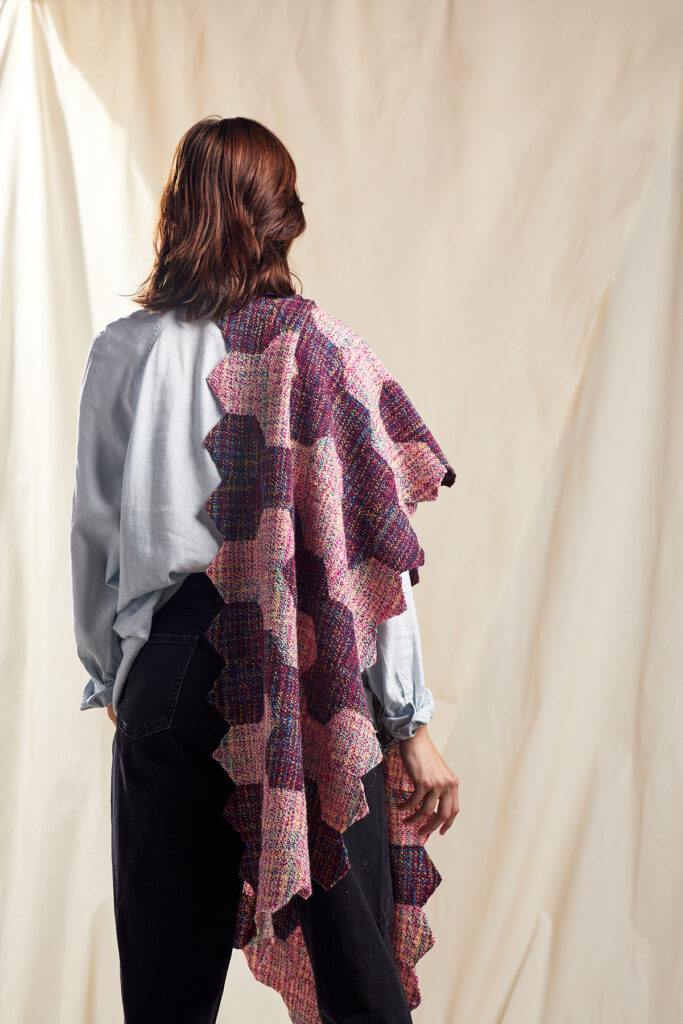
Me again (Rachel)! I’m so glad Gabi was able to share not only this beautiful design, but her thoughts on the inspiration, our new Cobblestone yarn, and even more yarns to explore weaving with! We have a small, square pin loom here in the office, and I am pretty tempted to start playing with it. The idea of a fringed scarf or cute cowl is awfully tempting!
I hope you love Pebbled Pathways as much as we do. Have you woven before, or are you now inspired to? Let us know in the comments!
